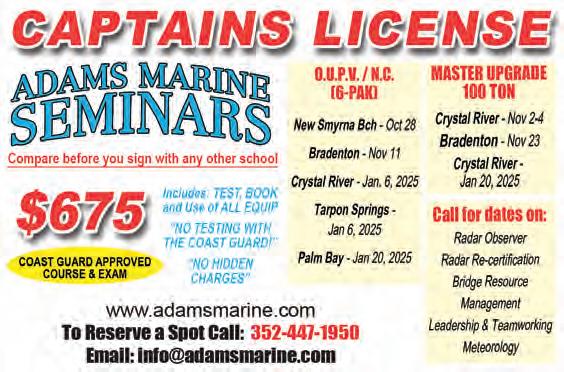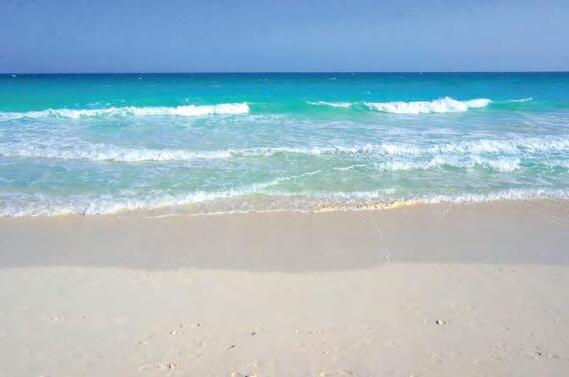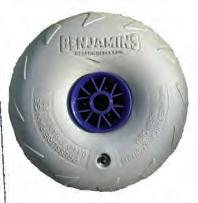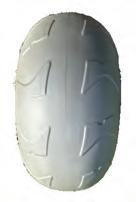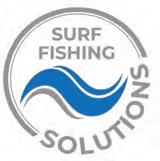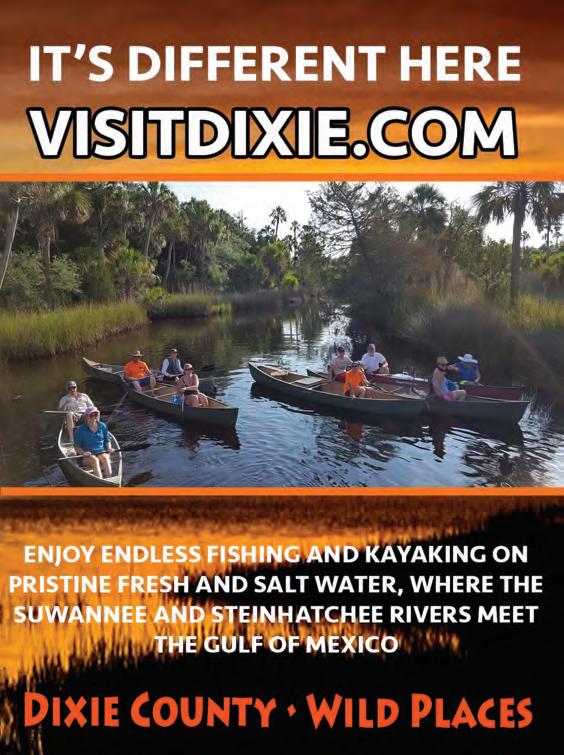

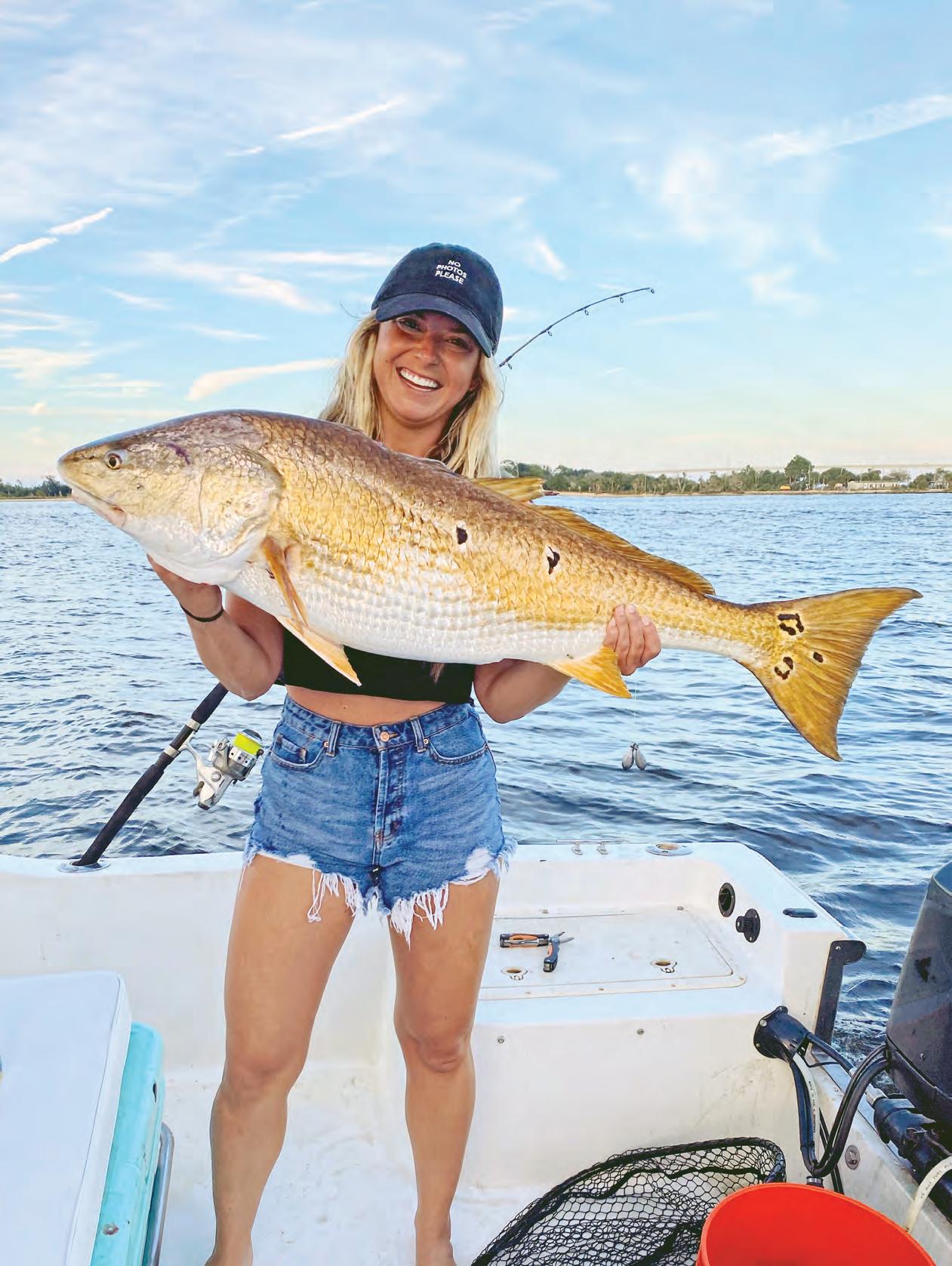





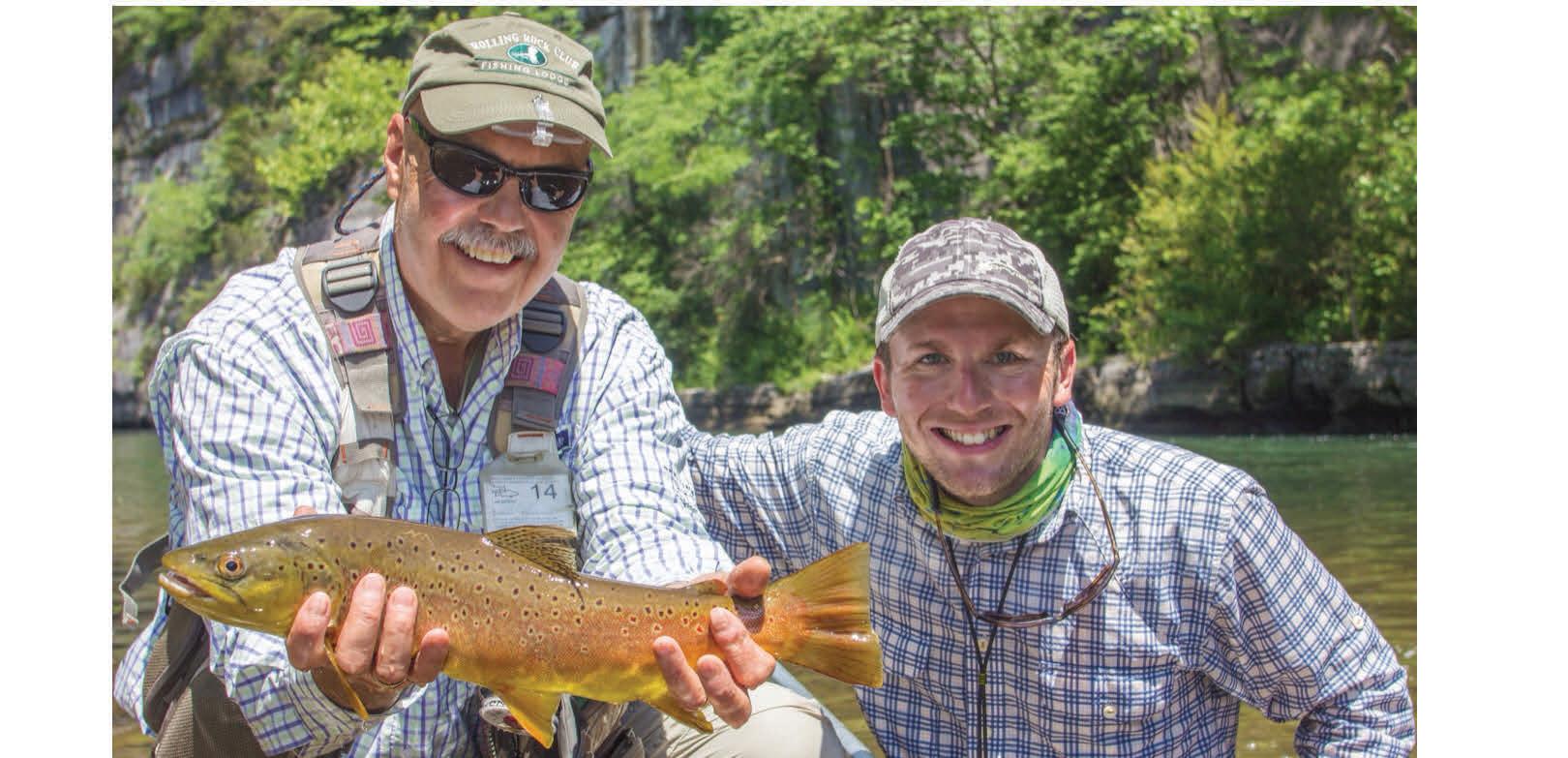


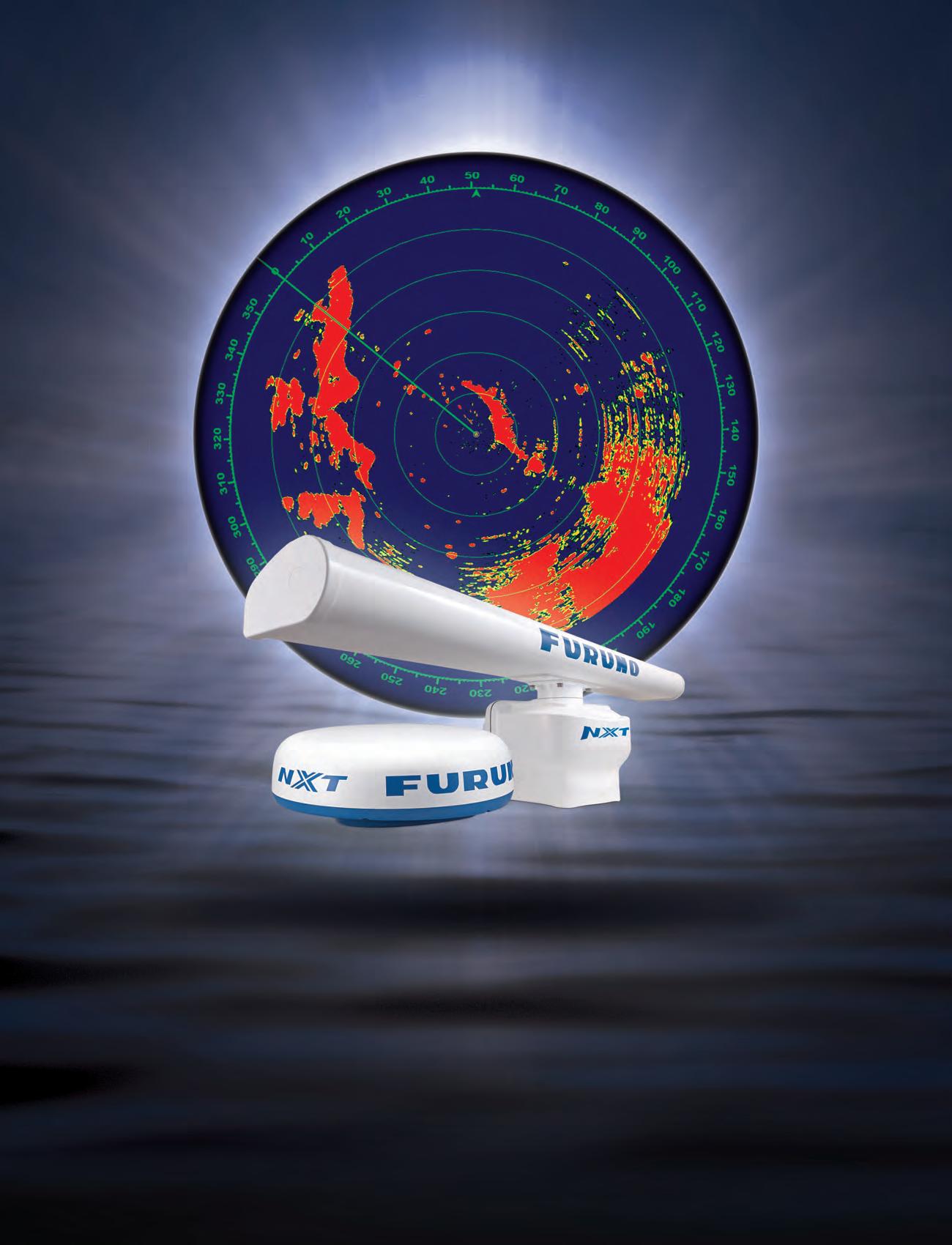
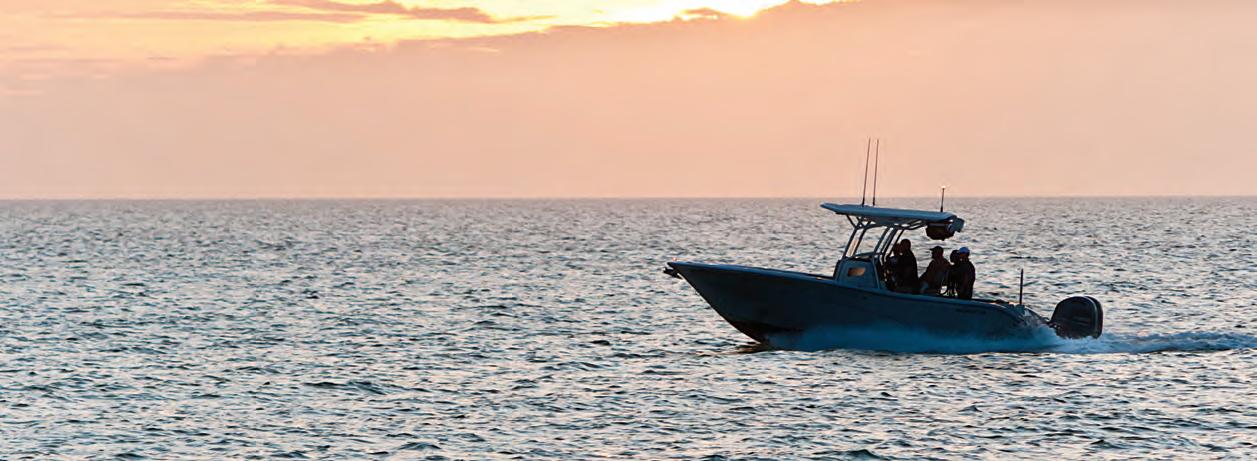
Are you ready to embark on your next on-water adventure? Before you set sail, here are ve things to know about boat insurance.
1. Boat insurance isn’t just for accidents
With comprehensive coverage, you’ll also be protected nancially for theft, vandalism, and unexpected events like storms if you need repairs or replacements due to damage.
2. Accidents can happen to anyone
When accidents happen, boat insurance offers liability coverage for damages or injuries you cause while boating, up to speci ed limits. It can also cover lawsuit costs if you’re sued.
3. Boat insurance can cover medical payments
Boat insurance offers a range of optional medical payments coverage limits, helping to cover medical expenses if you’re in an accident or someone is hurt on your boat, regardless of fault.
4. Most lenders require boat insurance
If you nanced your boat, you’ll likely need boat insurance since most lenders require boat insurance to protect their investment. Additionally, some marinas or municipalities require proof of insurance for docking.
5. Progressive offers specialized boat coverages Ever worry about getting stuck on the water? Progressive’s Sign & Glide® On-Water Towing coverage** can help. It’s an additional coverage that steps in if your boat is disabled or breaks down on the water, paying for on-water towing, jump starts, soft ungroundings, and fuel delivery. Fuel cost isn’t included.
Don’t let unforeseen circumstances disrupt your voyage. Cruise with con dence thanks to Progressive Boat insurance. Because when it comes to your boat, peace of mind is the ultimate luxury.
Scan to get a quote in as little as 4 minutes.
to learn more.



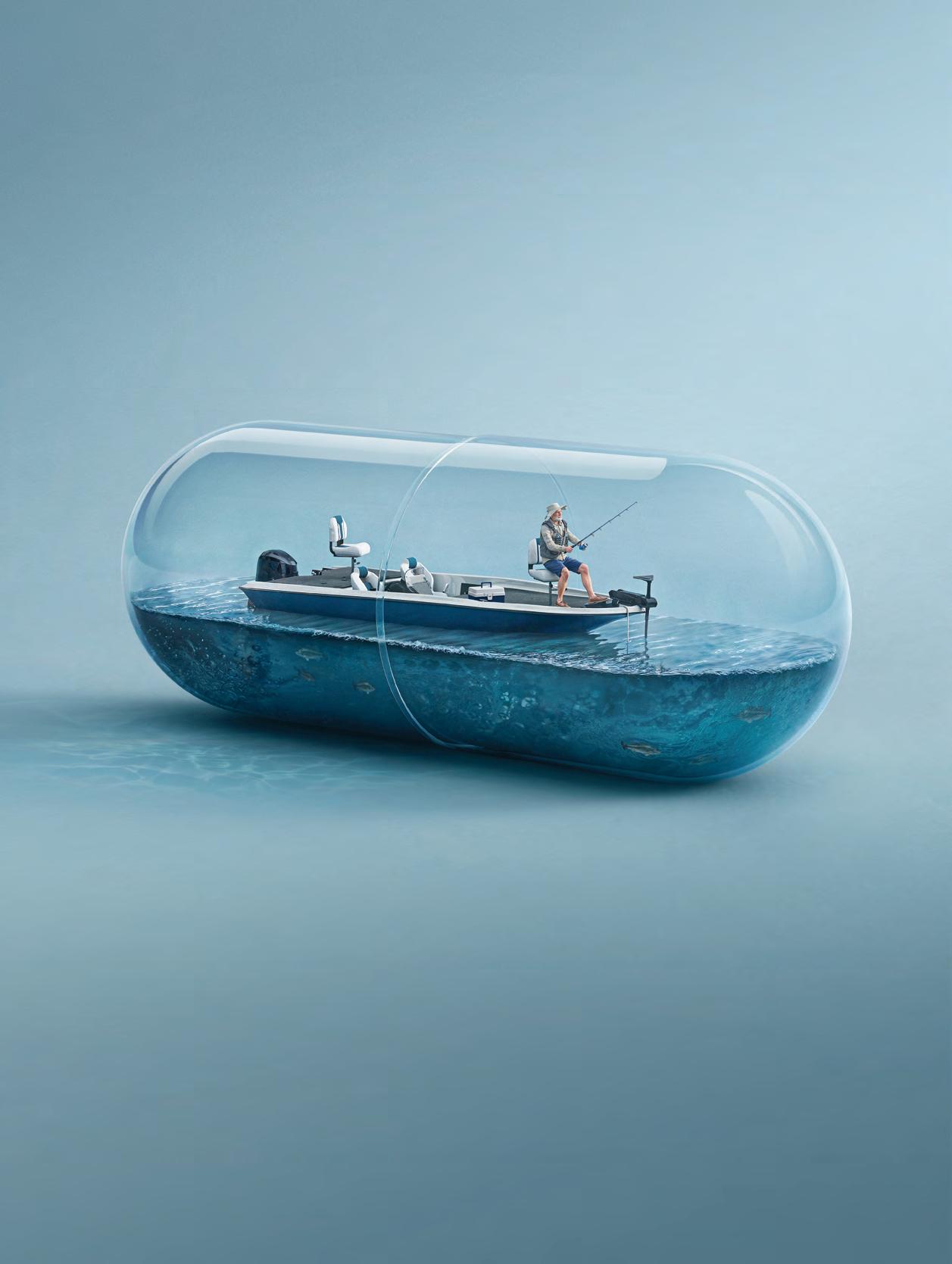
















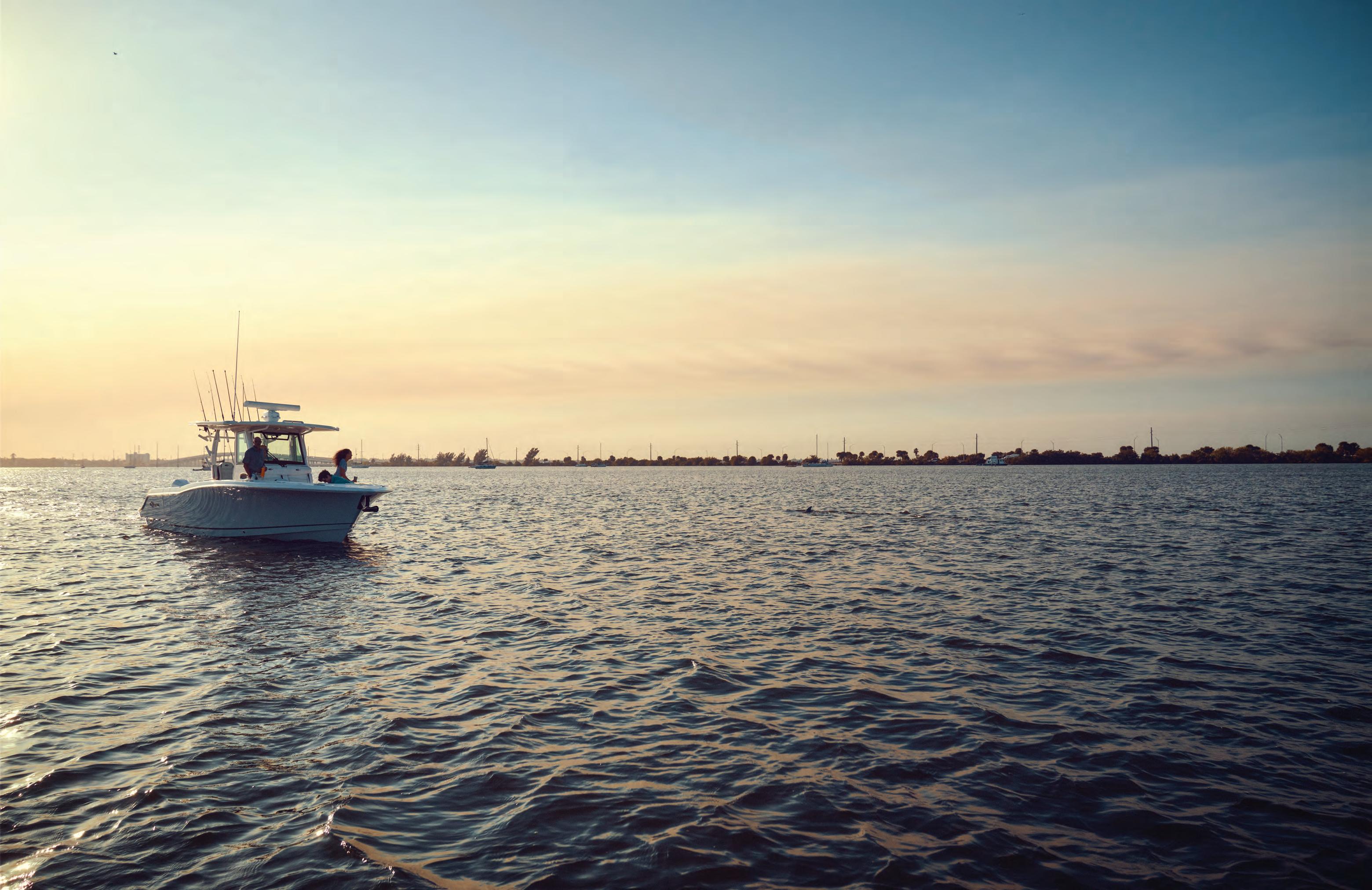

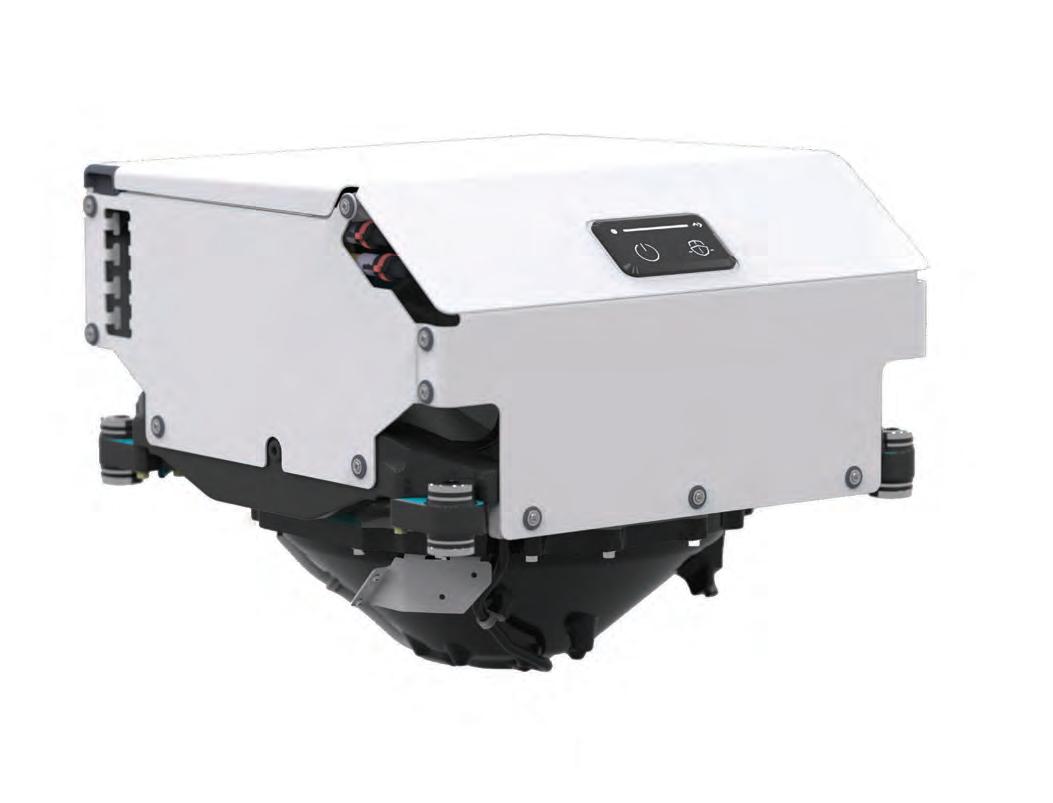


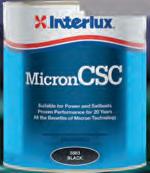



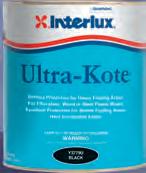
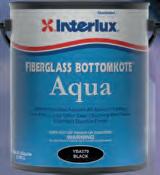


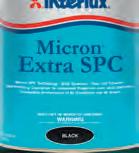
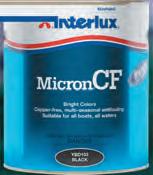
Interlux® fouling control products not only improve your performance by protecting your hull from fouling, they also protect against the spread of invasive species, safeguarding your local waters when exploring new regions, therefore helping you make a difference by looking after the waters that have provided you with enjoyment and freedom for so many years.
Like you, we have a passion for boating. We provide boaters the hull protection they deserve with over 140 years of cutting‑edge science, technology and expertise. You can expect only the best from every Interlux® yacht paint product, providing you the confidence to explore your world.
Relentless performance for every yacht, everywhere, every time. interlux.com





Capt. Mike Smith
Have you ever tried to use big dead baits to catch huge redfish? If you haven’t, then you should.

Many of the larger predatory fish prefer eating fresh, dead baits over live baits so they can save energy.
The odds of becoming an over slot redfish are at least a million to one. An overslot redfish has figured out not only how to avoid predators and how to conserve energy when finding food. That is why dead baits work so well for catching older, wiser and larger redfish.
The best dead baits for redfish are: a large blue crab cut in half, a butterflied large pinfish with its tail cut off, a chunk of ladyfish, and a chunk of bluefish. The key to catching redfish instead of catfish when dead bait fishing is by using enormous dead baits. You want to use baits at least eight inches long. Catfish always seem to find the bait first and most catfish can’t eat an eight inch dead bait.
Quite often you will catch your monster redfish and notice catfish slime on your line. This tells you that a catfish found your bait first but was unable to swallow it. If you are catching catfish with your dead baits, then you have to go bigger.
Pro Tip: Make sure to use at least a 5/0 circle hook and just enough weight to keep the bait stationary on the bottom. If you let the tide drag the bait across the bottom the redfish will have trouble finding it. But if you use too much weight the fish will often feel it and let go of the bait before getting hooked.
Circle hooks are much less likely to get swallowed and mortally wounding the fish, unlike a J hook. A J hook will often get swallowed if you are not constantly paying attention to your line.
When using dead baits for redfish keep the rod in a rod holder. Rod holders are much better at hooking redfish with circle hooks than we are.

Keith caught this monster redfish with an 8-inch chunk of bluefish along a drop off in Florida’s Indian River Lagoon.
When the redfish picks up the bait and swims off with it, the hook will lodge right in the corner of the fish’s mouth.
The best tackle for catching enormous redfish with dead baits is a medium heavy seven-foot-six-inch rod coupled with at least a 5000 series reel. Spool your reel with 30-pound braided line and make sure to have at least a 30-pound leader attached to the hook.
You can certainly catch a 40-inch redfish with a smaller rod and reel combo but the fish will be half dead by the time you get it landed. In that weakened state the fish will sometimes fall prey to a nearby dolphin or shark. There is no sense killing a big breeder redfish that you cannot harvest anyway.
Capt. Mike Smith, owner of Fish Your Ass Off Charters, is an inshore fishing guide who has been fishing the inshore waters, oyster bars and grass flats of Florida for more than 40 years. Reach him at (561) 339-2317, email: contact@fishyourassoff.com or visit fishyourassoff.com.

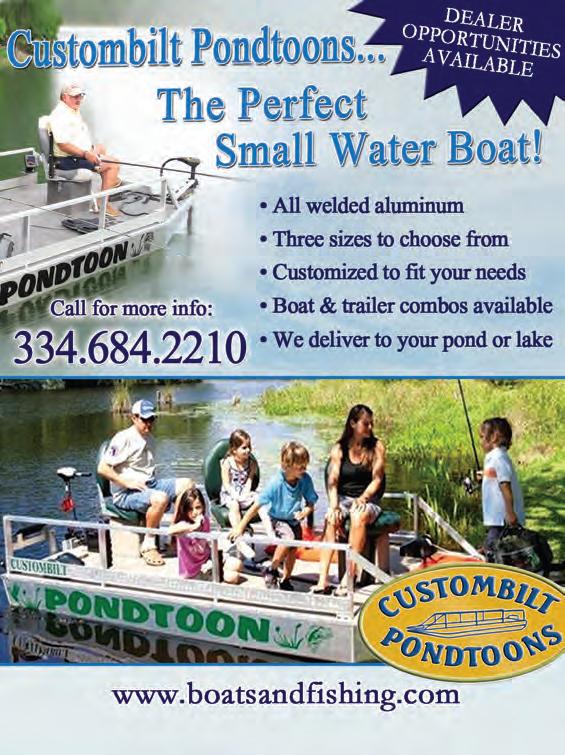
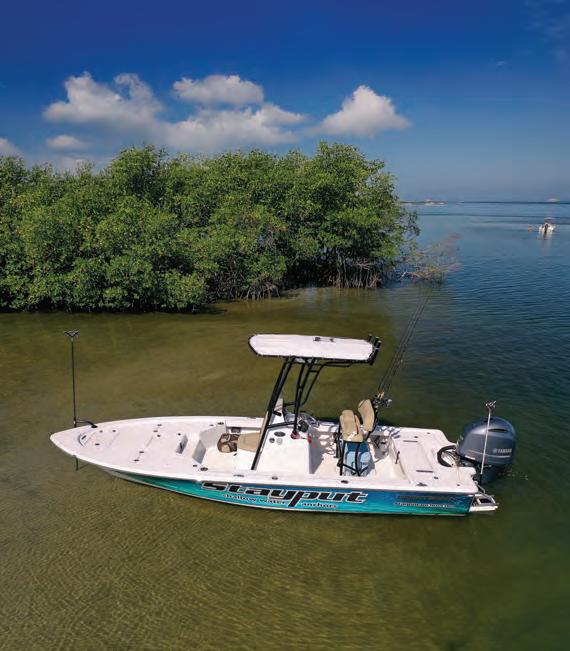
BY NPFL PROFESSIONAL ANGLER JOEY BLOOM
The first cool mornings of fall always bring a little excitement for me. When I back the boat down the ramp and see mist rising off the water, I know the season is changing and the bass are about to do the same. Down here in the Southeast, the fall transition is one of the most unpredictable—but also one of the most rewarding— times of the year.
The key is bait. As soon as water temps slide from the 90s into the mid-70s, shad begin their migration out of the main lake and into the creeks or shallow shorelines. They’re chasing plankton, and the bass are never far behind. If you can find the bait, you’ll find the fish. I don’t even bother making a cast until I see shad flickering on the surface or lighting up my electronics.








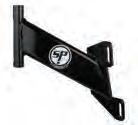

My mornings usually start with topwater or a shad-colored swim jig. A walking bait is one of my favorites to throw across the mouth of a pocket, and it can trigger some of the most violent strikes of the season. I’ll never forget a morning last October when a seven-pounder came out of two feet of water and nearly ripped the rod out of my hand. That’s fall bass fishing— when they decide to eat, they don’t play around.
As the sun gets higher, I shift gears. Shallow wood, laydowns, docks and grass edges become prime ambush points, and that’s when I reach for a squarebill crankbait. I like squarebills because they’ve got just the right wobble and durability to grind through cover. The trick is to make contact—bump that crankbait off a stump, dock, or tick it through grass. Those deflections are what trigger bites. Covering water quickly is important because bass are constantly on the move, shadowing those bait schools.
But not every fish in the lake makes the same move at the same time. Some of the bigger, older bass stay out deeper longer. For those, I keep a Carolina rig handy, and I’ve had great success pairing it with Bait Cave Customs hand-poured soft plastics. That slow drag across a secondary point can tempt those stubborn deep fish that won’t chase a moving bait.
Weather plays a huge role, too. A cold front will slow everything down, and that’s when I switch to finesse—something like a Bait Cave Customs, Cave Club finesse worm on a shaky head, worked methodically. On the flip side, a cloudy, stable day can set off a feeding frenzy, and that’s the time to throw reaction baits and keep covering water. Fall fishing here is a constant adjustment game, and you have to be willing to change with the conditions.
At the end of the day, the fall transition is like putting a puzzle together. The pieces change daily—sometimes hourly—but once you figure out where the bait is, how the bass are relating, and what they’ll react to, the action can be phenomenal. It’s the season where I cover the most water, throw the widest variety of baits, and stay the most flexible.
For me, that’s what makes fall in the Southeast so special. It’s unpredictable, challenging, and full of opportunity. And when everything lines up, it’s some of the best bass fishing of the entire year. With the right mindset—and the right tackle—you can make this season one to remember. Follow all of Joey Bloom’s fishing and fun on Instagram, Facebook, and YouTube at Joey Bloom Fishing.

















Mastry Engine Center has received the Suzuki Marine Super Service Award and has been ranked #1 in Suzuki Marine US Sales! 60 YEARS OF REPOWER EXPERIENCE!

RePower Packages designed to best ft your needs and not stretch your budget. Financing available.

Rest assured, all Mastry Suzuki RePowers are backed by Suzuki’s industry leading 5-year factory warranty.

Stationed strategically around the East Coast, all Suzuki RePower Centers have achieved the highest level of Suzuki certifcations to meet and exceed your repower needs.
When Considering A Repower, Consider These Factors:
•Every Authorized Mastry Suzuki RePower Center has decades of repower experience providing proper rigging, controls, propeller matching and in water testing
•With a Mastry Suzuki RePower, owners gain improved performance, less noise and greater reliability
•Mastry Suzuki RePower’s exclusive Owner’s Edge Program*
•Mastry Suzuki RePower Centers use authentic Suzuki OEM parts and have factory certifed technicians

Since 2014, Mastry Engine Center, has been building the premiere Suzuki Outboard repower network in Florida. Today, Authorized Mastry Suzuki Outboard Centers have been exceeding expectaions in the Southeast for over two decades. Recently Suzuki Marine requested Mastry Engine Center to expand the network throughout the Northeast. Now boat owners from Maine to Florida can be assured of the best support for their Suzuki outboard repower project. All Authorized Mastry Suzuki RePower Centers provide the best options, information and package pricing for excellent performance in repower.




When you purchase a new Suzuki outboard from an authorized Mastry RePower Center you qualify to become a member of the Mastry Suzuki Owner’s Edge. Owners receive an identifcation card that provides them with important information about their Suzuki outboard motor as well as a passport to additional benefts during ownership. Members enjoy a detailed engine maintenance schedule, Mastry Suzuki RePower Trade Program and special pricing from Mastry Suzuki Partners *Get with the Program!
By Capt. Michael Okruhlik
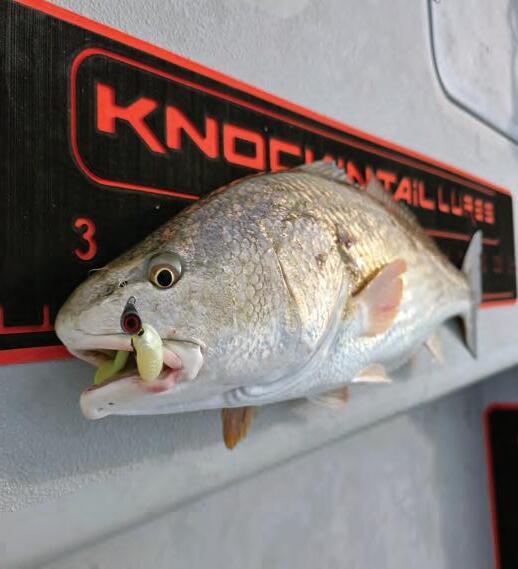
October might just be the perfect month to be on the water. e blazing heat of summer has faded, boat tra c thins, and the marsh comes alive with shrimp, n sh, and the “big three” — trout, red sh, and ounder — all fattening up for the season. For anglers, that means opportunity.
is time of year, I like to keep things simple but intentional. So plastics in the 3.25-inch range are my bread and butter. I lean toward paddle tails because I can cover water quickly and the vibration draws strikes from aggressive fall sh. Durability matters too, because when the action gets fast, the last thing you want is to burn time swapping out torn lures. Rigging depends on cover and depth — sometimes weedless, sometimes a jig head — but either way, adapt to the structure in front of you.
Outgoing tides are my favorite. ey concentrate bait and predators alike into smaller, target-rich areas. Look for drains, bayou mouths, bends, and reef cuts. Even island points can funnel current and stack sh. Once you’ve found the spots, presentation is everything. Reds o en respond to a steady retrieve, trout like a twitch-twitch pause, and ounder react best to a lure darting along the bottom, stirring up a little commotion. Of course, no sh reads the manual — sometimes the “wrong” retrieve produces the right bite. Which brings me to one of the best lessons I’ve learned: sometimes you’ve got to break your own rules. On a recent quarter-moon tide, I worked a shallow grass at with two rods rigged identically except for lure color. One was white with a limetreuse tail, the other pumpkinseed with green glitter. Early on, the reds were all over the pumpkinseed, inhaling it on a fast, steady retrieve just under the surface. But when I noticed trout feeding nearby, I switched things up. Instead of swimming the bait, I bounced it hard o the bottom, fast twitches with short pauses. Suddenly, the trout lit up, and they showed a clear preference for the white limetreuse. at day drove home an important point: don’t get stuck on what’s working. Change the speed, change the color, change the action — sometimes even when the bite is good, it can get better. Covering the same water with di erent retrieves or presentations lets you unlock what di erent species want, even when they’re feeding in the same spot.
So, as October cools the air and the marsh lls with life, keep your tackle simple but your approach exible. Target those pinch points on a falling tide, let the sh tell you what retrieve they want, and don’t be afraid to experiment. e sh are hungry, the weather is kinder, and it’s the perfect time to grab a kid, a paddle tail, and make some memories.
Capt. Michael Okruhlik is the inventor of Knockin Tail Lures®, and the owner of www.MyCoastOutdoors.com.
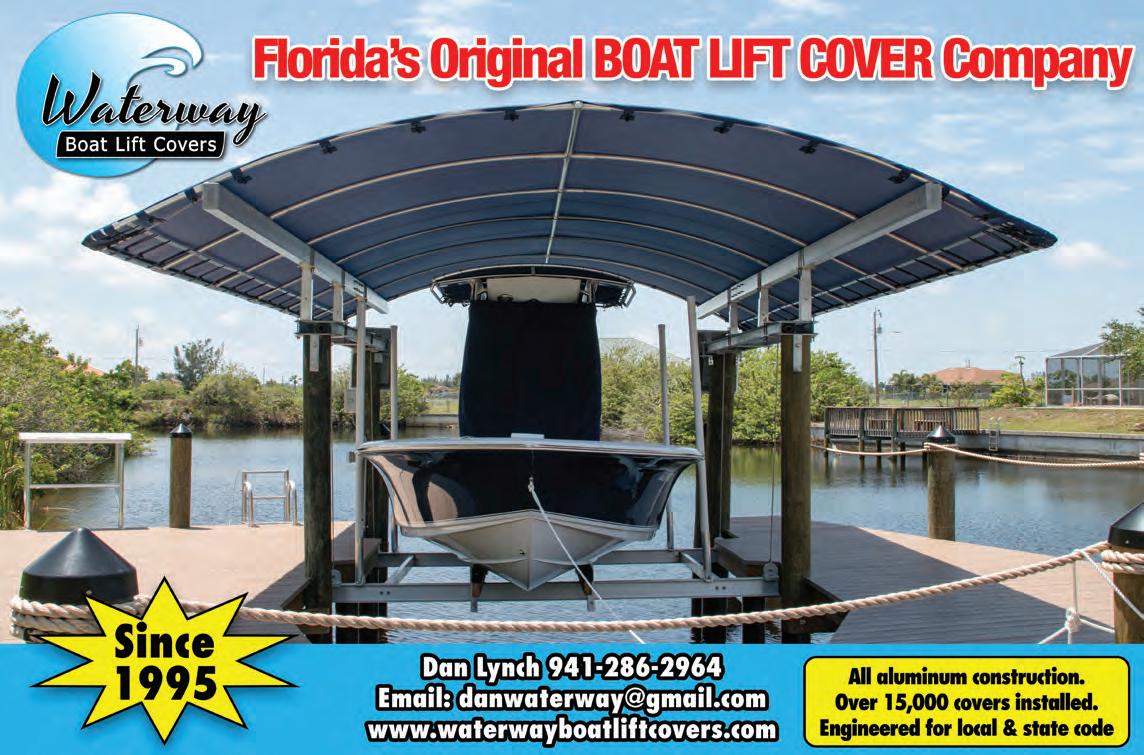


The dog days of summer are slowly fading, but with fall just around the corner, we should start seeing cooler temps soon. I love this time of year, from the Gulf to the Atlantic, the fishing opportunities are wide open, and the action is only getting better.
Lately, I’ve been spending a lot of time targeting snapper on the reefs and around the local bridges and the bite has been solid. My go-to setup is a 7-foot spinning rod rated for 15–20 lb. line, rigged with a long fluorocarbon leader. I place a sinker about 10 feet up the line, held in place with a swivel to keep it from sliding. This setup gives live bait plenty of room to swim naturally while staying down in the strike zone. I typically use a 4/0 or 5/0 circle hook as it’s been working great.
By: Capt. Greg Poland
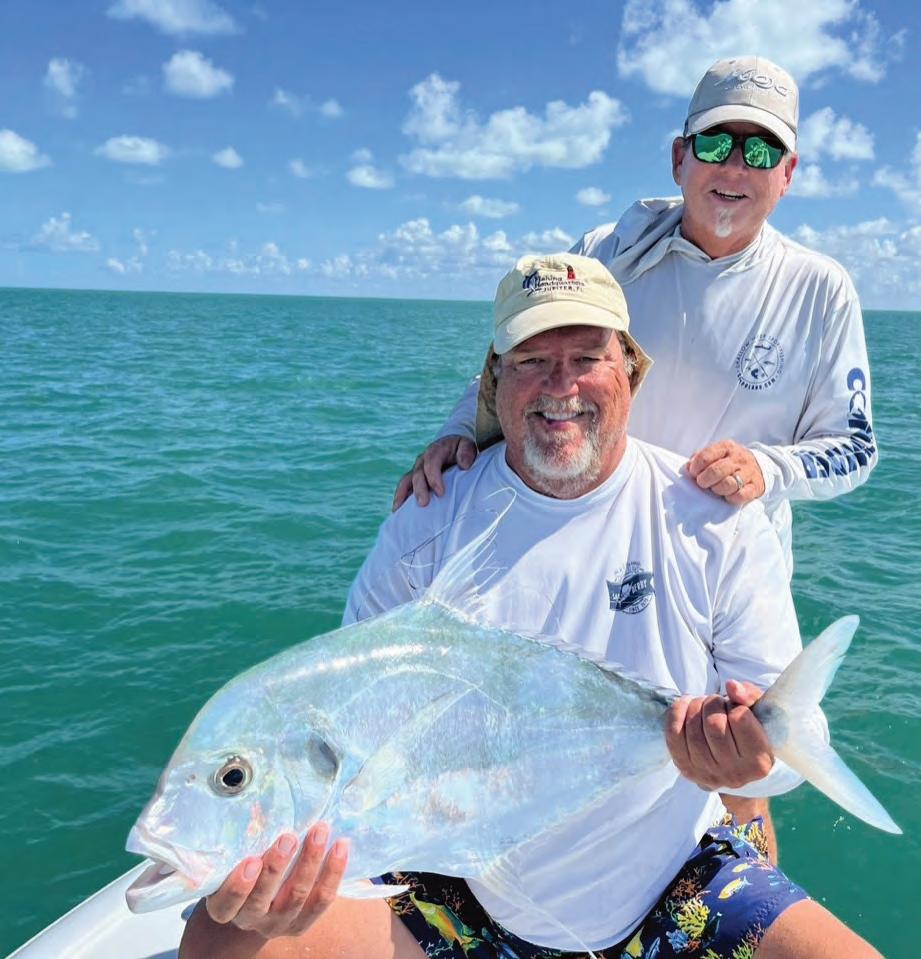
If you’re heading into the Everglades, the snook fishing has been on fire and there have been some nice redfish showing up as well. I like to use the same snapper tackle when fishing live pilchards or pinfish. If you’re casting shrimp, rig it on a jig head and bounce it along the bottom near the mangroves, chances are good you’ll get a strike.
I love leaving in the dark and running over to Flamingo to catch the early morning rolling tarpon at sunrise this time of year, if you are willing to set the alarm clock to go off early I am sure it will be a morning you will remember. These small to medium size poons are always happy to take a live bait under a cork or even better, a well-placed fly. This is hands-down one of my favorite ways to fish for them this time of year.
Please remember to be cautious as the sharks have been swarming, and if you hook a snook or tarpon, get on it fast. Once the sharks move in, you’ll want to switch spots quick as they’re not shy about stealing your catch!
If you’re looking to get out on the water, give me a call and let’s go catch some fish. Until then, tight lines, and if you’re around the Lorelei stop by and say hello!
By: Capt. Angelia Swanson
As we are once again in the midst of our stormy season, the barometric pressure seriously affects our fishing. Fish have a gas filled bladder that helps with their buoyancy. The barometric pressure changes the volume in these swim bladders and causes discomfort for the fish. This discomfort significantly changes not only the feeding pattern of the fish, but their movement as well. When the barometric pressure starts to fall it is an indication of bad weather moving our way.
This is a great time to fish because they feed much more aggressively and are very active. They’re preparing for the storms just like us! They will also move into shallower feeding grounds during this time.
This time of falling barometric pressure is an excellent time to go fishing. They are much more likely to strike at just about any bait presented. After bad weather passes through and the barometric pressure begins to rise, the fish will become sluggish and may not return to their normal feeding for some time. The rising barometric pressure will also cause the fish to move into deeper waters and seek cover in structure and “rock up”. I never thought much about the barometric pressure until I spent some time fishing in Alaska.
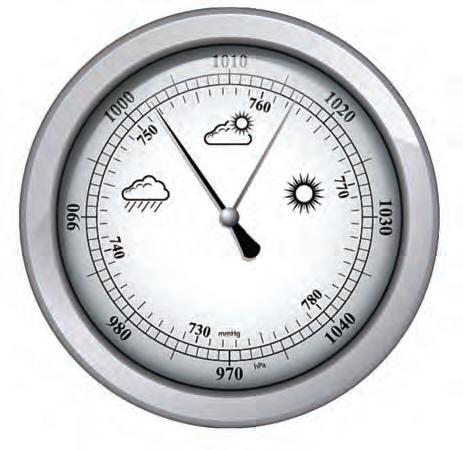
sure above 34.2 inHg is considered high, whereas a pressure reading below 29.8 inHg is considered low. Normal pressure is right in between.
The inHg in barometric pressure stands for “inches of mercury”. The barometer works with mercury, kind of like an old school thermometer. Monitor your barometer to follow the pressure and change up the technique and lures you are using. With falling pressure faster and brighter presentations should be used, and when the pressure is rising, use smaller baits with a slower presentation.
My most extreme example of this barometric pressure fall and rise was during the time hurricane Irma hit the keys September 6, 2017. Prior to the storm the fishing was incredible! It seemed that everything was biting. But after that hurricane passed, fishing in the keys was tough for a while. The only things biting were predators such as Barracuda and Sharks, and I experienced something I never thought I would! Something gigantic hit my trolling line, and after 2 hours of getting this beast to the boat, it was a 9’ Bull Shark! Definitely not what I was hoping to catch, but an incredible experience for me.
The anglers in Alaska live by that barometric pressure, and they may cancel their fishing excursion altogether if the barometric pressure just bottomed out overnight, so when I got back to fishing in the keys I paid much more attention to what the barometric pressure was doing. Barometric pres-
So as our stormy season is upon us the barometric pressure will be a huge factor for success on your fishing excursions. Buy yourself a barometer or download one of many fishing apps that have barometric readings in the app. You won’t regret it!

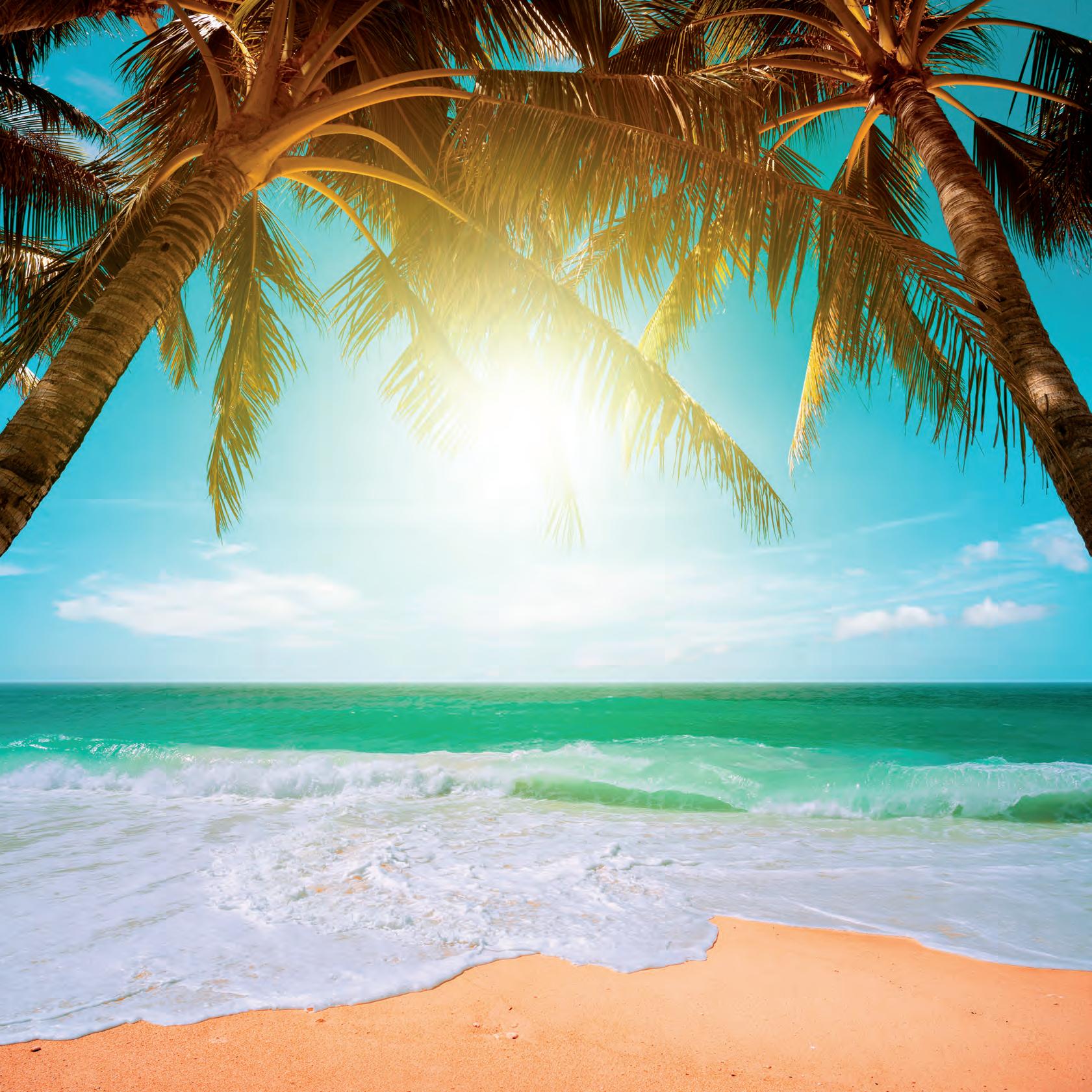
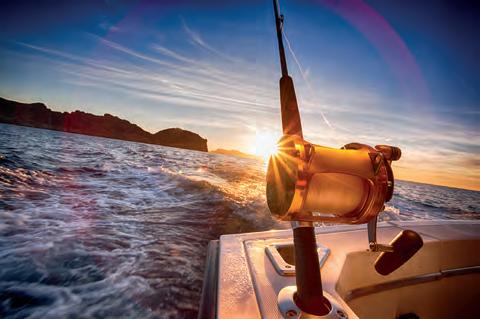




By: Capt. Bruce Andersen
Don’t overlook the off-season action here in the Florida Keys. When most people think about visiting the Florida Keys, they picture the busy months of winter or spring. But one thing my 30 years of experience as a charter captain here in the Keys has taught me is that October is one of the very best times to fish here. While tourism slows down a bit during the fall, the fishing action is anything but quiet. In fact, October offers some of the widest variety of fishing opportunities we see all year.
One of the unique advantages of October is the overlap of our fishing seasons. Offshore, summertime favorites like mahi-mahi and blackfin tuna are often still around. These pelagic species continue to provide plenty of action for anglers willing to put in the time offshore. At the same time, our winter fishery begins to come alive. As the water cools and baitfish start moving, the sailfish begin to show up, and we also start seeing more wahoo and king mackerel in the mix. This combination makes October an exciting month where you never quite know what you’ll find out there.
mutton snapper, and grouper. Slightly cooler fall weather and lighter boat traffic make conditions ideal for a productive day of anchoring down on the reef or drifting over wrecks. These fisheries are not only action-packed, but they also provide some of the best-tasting fish you’ll ever put on a dinner plate.
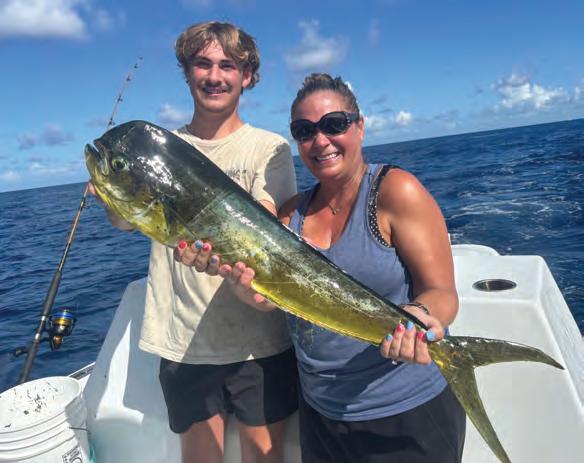
Another highlight of October are the first cold fronts of the season. When those first few fronts push through, it cools the air and water noticeably, signaling the start of the transition into late fall and winter fishing. Those shifts bring new opportunities and a different style of fishing, and being on the water during that change is always something special.
For those who enjoy reef and bottom fishing, October is also hard to beat. The reef edges and deeper wrecks hold excellent numbers of yellowtail snapper,

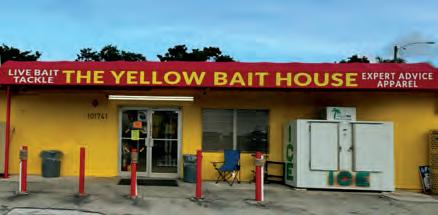

While many consider October to be the off-season in the Florida Keys, I’ve always considered it as a prime month for fishing. Whether you’re looking for offshore excitement, reef action, or a chance at a trophy gamefish, October delivers it all. If you’d like to experience it firsthand, I’d be glad to welcome you aboard my charter boat the Captain Easy, or you can choose from any of the other amazing charter operations here in the Keys. Either way, October is a month you don’t want to miss on the water here in the Florida Keys! — www.captaineasycharters.com | You can reach Captain Bruce Andersen at Capt. Easy Charters, MM 85, call 305.360.2120 or email at: captbrucekey@comcast.net

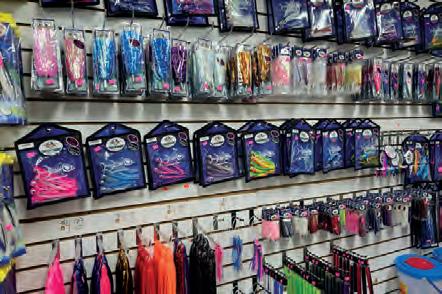

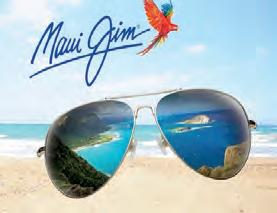
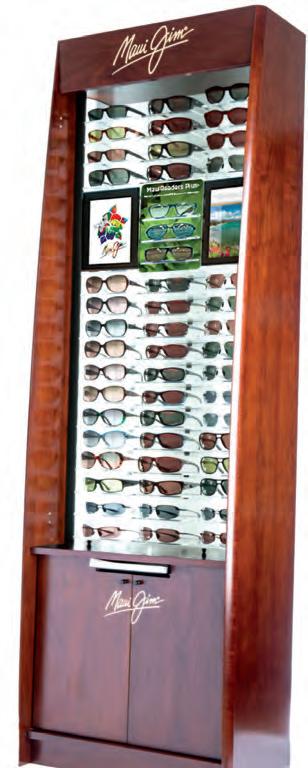






By: Capt. Joel Brandenburg
When it comes to offshore fishing in the Florida Keys, few destinations compare to the Marathon Humps. Situated about 27 miles offshore of Marathon, these underwater seamounts rise dramatically from the ocean floor, creating a unique environment where currents collide and baitfish gather. This natural upwelling turns the humps into a year-round feeding ground for pelagic predators, with blackfin tuna being one of the most sought-after catches. Anglers from around the world travel to Marathon to test their skills against these hard-fighting fish, which are prized for both their strength and table quality.
The Marathon Humps consist of three primary rises: the West Hump, the 409 Hump, and the Marathon East Hump. Each one is a hotspot where nutrient-rich waters attract schools of flying fish, squid, sardines, and ballyhoo. Blackfin tuna, the smallest of the tuna species, thrive here in impressive numbers. Ranging from five to 30 pounds, they are fast, aggressive, and incredibly strong for their size. The humps offer consistent action nearly year-round, with peak blackfin seasons occurring in spring and fall when the schools are at their thickest.
One of the most effective tactics is drifting live baits such as pilchards or cigar minnows over the humps. Many captains recommend catching a livewell full of pilchards before heading offshore. Once you arrive, you can deploy a steady chum line of live baits, often called “live chumming.” This excites the blackfins and brings them right to the boat, often within sight of the surface.
For anglers who enjoy a hands-on, high-energy method, vertical jigging with heavy metal jigs can be extremely productive. Dropping a jig to depths of 200–400 feet and working it back up with quick, erratic motions mimics fleeing baitfish. Blackfins often strike suddenly and without hesitation, giving anglers a direct feel for the fight.
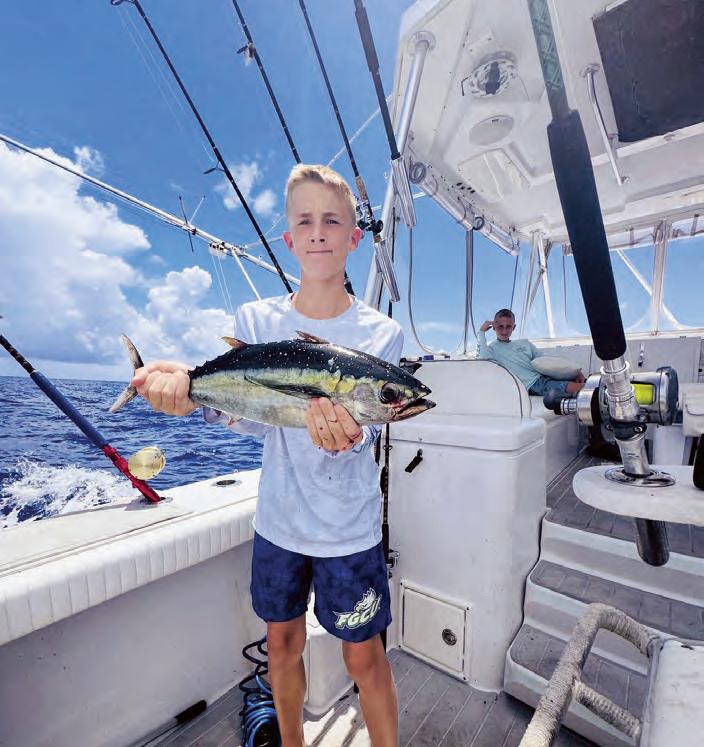
There are several productive methods for targeting blackfin tuna at the Marathon Humps, each catering to different conditions and angler preferences.






Trolling small feathers, cedar plugs, and rigged ballyhoo around the humps is another classic method. This technique allows you to cover more ground while searching for schools of tuna. Trolling also offers opportunities to hook into other pelagic species such as mahi-mahi, wahoo, or even the occasional billfish.
Another tried-and-true technique involves cutting up fresh baitfish into chunks and tossing them overboard to create a feeding frenzy. With lines baited and set at varying depths, anglers can pick off blackfins one by one as they move in to feast. Blackfin tuna fight far above their weight class, proper tackle is essential. Medium spinning or conventional setups spooled with 20–40 lb. braid or mono are standard, matched with
fluorocarbon leaders in the 20–30 lb. range. The fish have sharp eyesight, so light leaders often produce more bites. Circle hooks are preferred, as they help with solid hooksets and improve the chances of releasing fish in good condition.
Once hooked, blackfin tuna provide a thrilling battle. Their stamina and speed make them one of the toughest pound-for-pound fighters in the ocean. After the fight, the reward is equally satisfying. Blackfin tuna are excellent table fare, perfect for sushi, sashimi, seared steaks, or grilled fillets. Because they don’t grow as large as their yellowfin cousins, icing them quickly is critical to preserving the quality of the meat.
As with all fisheries in the Florida Keys, sustainability is important. Anglers should stay current on bag limits and size regulations set by the Florida Fish and Wildlife Conservation Commission and federal authorities. Responsible harvesting ensures that future generations will continue to joy the thrill of fishing the Marathon Humps!

— For a charter with Captain Joel Brandenburg of Ana Banana Fishing Company Marathon Florida Keys call 305– 395–4212 office# or 813–267–4401 Cell #. Or visit us in person at ponchos fuel dock a half block away from Cast Away restaurant at 1280 Oceanview Ave. Marathon Florida Keys.



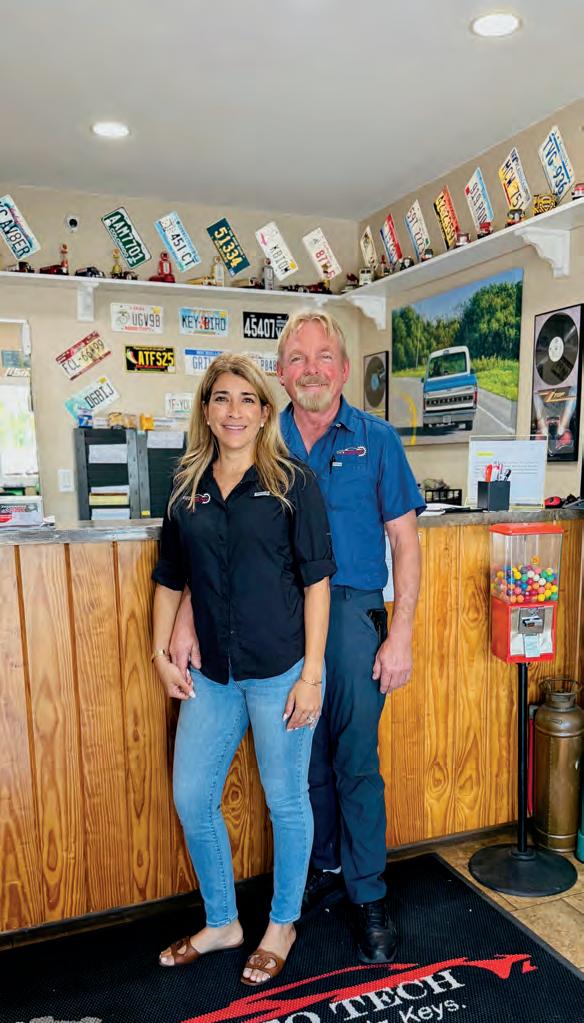

6
5
2
1





























































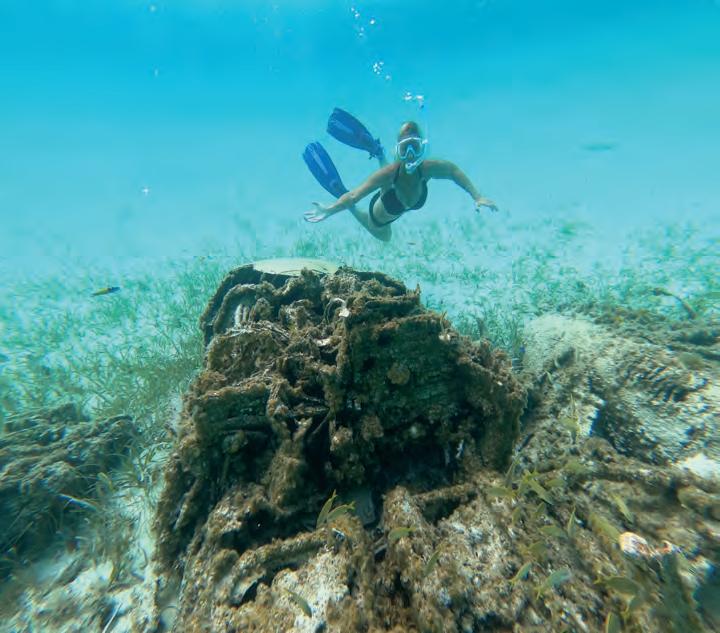

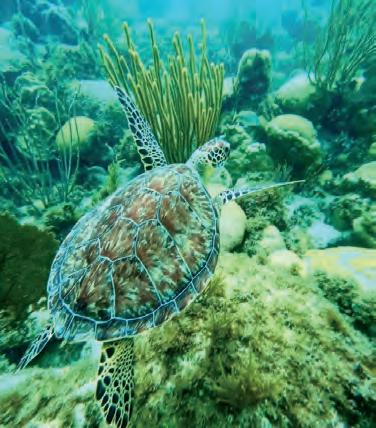

9
6
5
2
1
22
24


































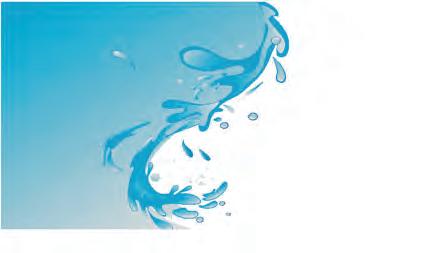

































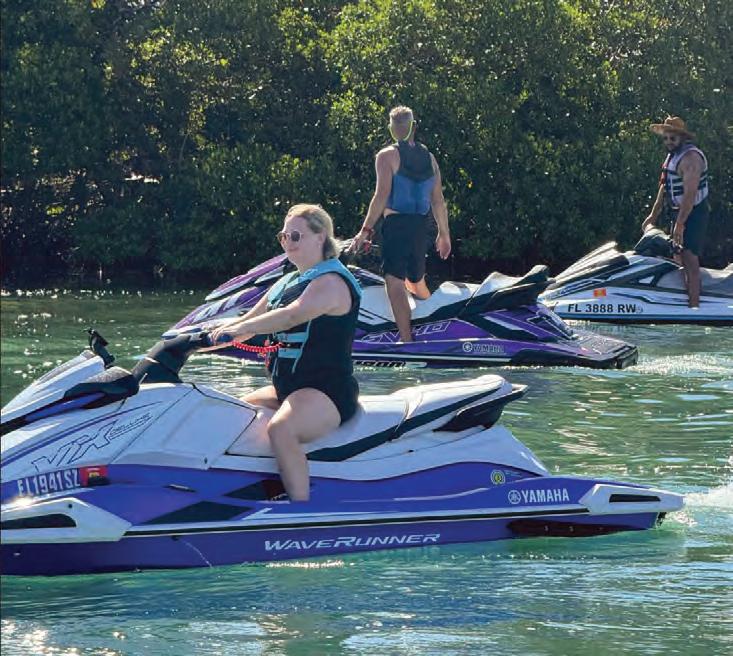
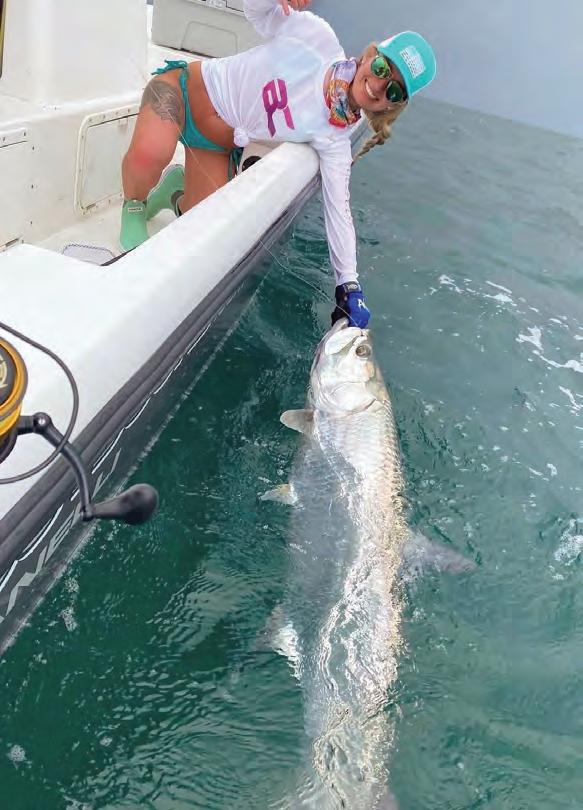
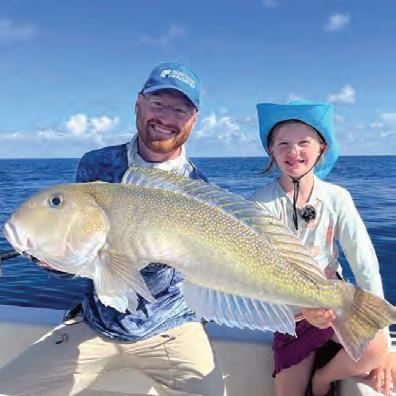
By: Jessica Hendrie
There’s something about a fishing pole in hand that goes far beyond catching a fish. For many of us, the lessons learned on the water seem to creep into every part of life from running a business to navigating marriage.
As we know, fishing is the ultimate teacher of patience, business and life. You can have the best bait, sharpest hooks, and still wait hours for a bite. In a world addicted to instant gratification, fishing reminds us that waiting is part of the process.
This then takes us to adaptability. No two days fishing are rarely the same… one morning the bite is hot, the next it’s not. Successful anglers read the tide, the current, the wind, and adapt. How many times in your life has flexibility been more valuable than a rigid plan? Just like switching the bait, we have to try different approaches until something works.
Another truth of this is that most times, we miss far more fish than we land. But you keep trying anyway because the next one might be the best one. When that best one finally bites, the biggest lesson rises. Appreciation. You have the fish, so now you’re taking in the sunrise, the calm water, the smiles… and the fish you’re about to cook.
Those small wins are priceless. It’s all about slowing down, turning into nature, and realizing that success, in fishing and in life, is rarely instant. It’s earned. So, when the line finally gets tight and the reel screams, the reward is that much sweeter because you waited, learned, and didn’t give up. Happy fishing.






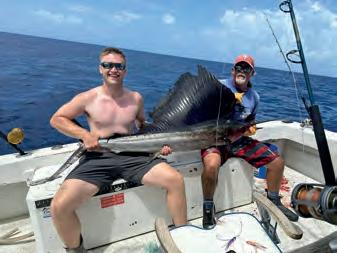



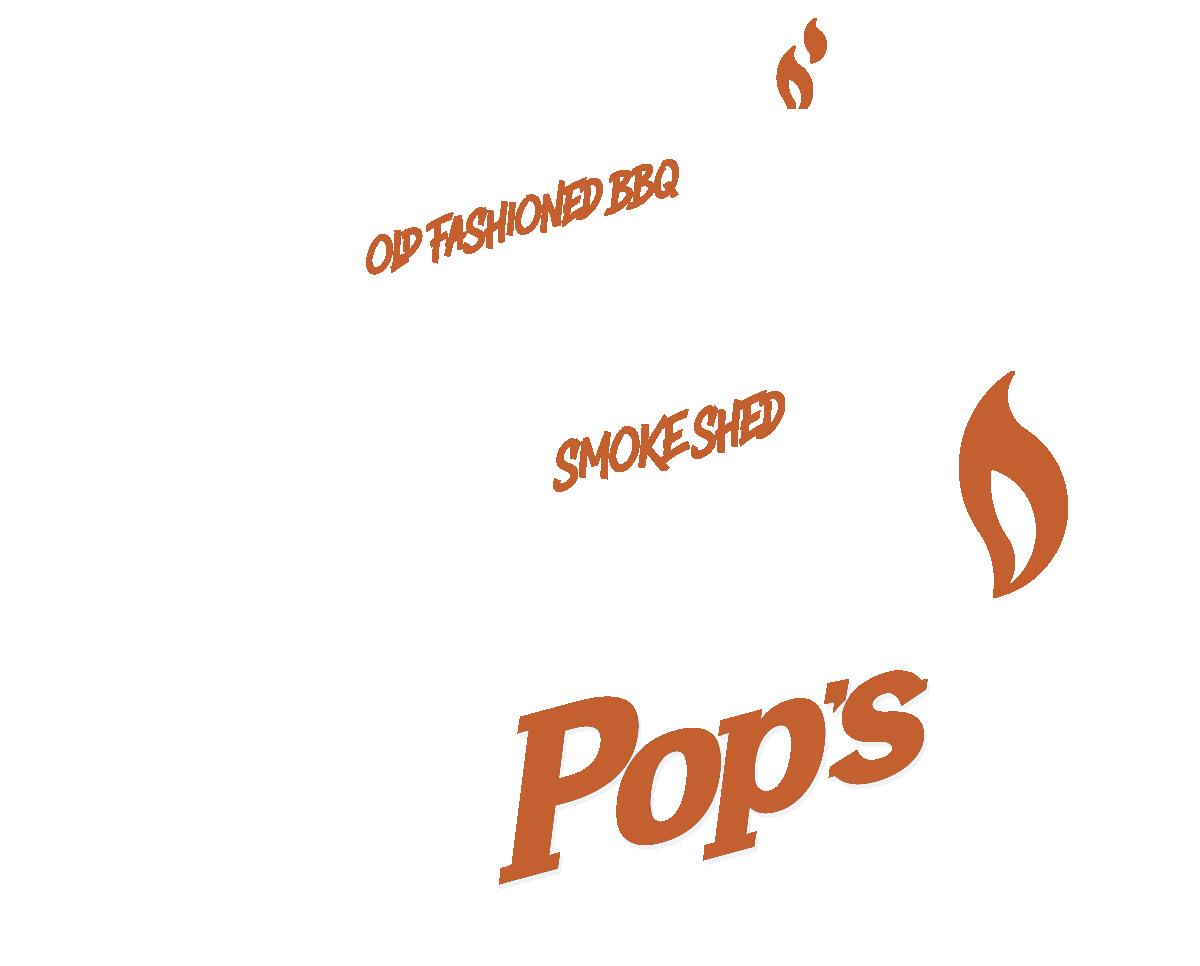



By Caitlyn Gatrell

When fall rolls into the Backcountry, the area come alive as anglers hunt the water and bait and fish are active. The temperatures begin to drop and the tides and bait movement kick off some of the best fishing of the year. Florida does have good year-round fishing, but fall brings out some of the trophy catches such as bull redfish, big snook, and more. Just keep in mind that in the mangrove mazes, the cooler season means hungry, breeding and migrating fish and bait are out and about.
From the mangrove lines to the shallow water of local islands and their points, and even in the backcountry, schools of baitfish, especially mullet who are on their annual migration run around this time, start becoming more and more abundant. They are easily found and can be caught with a cast net.
When you secure your bait and head to your spots, get ready for a potential gnarly fight. Not only are there sharks around, but snook and redfish become more aggressive, jacks strike hard on bait balls, and trout are around and willing to bite. The fall season also includes a taste of tarpon fishing as you watch them chase the mullet run as it pushes south.
We spend most of our fall trips targeting the mangroves and nearby structure such as docks, drop offs, piers, cuts, oyster beds, points, etc., wherever the current pushes bait through. These ambush spots are great for snook and reds, which are feeding heavily before winter slows them down. Redfish patrol the shallows, tailing on oyster beds and shorelines, and when you hook into one, they’ll run with power. The same goes for snook, often hiding in between mangroves branches and nearby the underwater cuts.
Live bait is a go-to this time of year, but top waters and soft plastics can get explosive strikes on crisp mornings when the water temps are just right. A couple key factors that help us succeed are casting tight against the mangroves, slowly trolling along oyster beds and flats, and free lining baits into the deeper cuts and currents.
Fall fishing isn’t just about what you catch, it’s also about how it feels. The temperatures and atmosphere are cooler and in my opinion quieter, the water is alive with movement, and every strike feels like part of the season’s rhythm. Whether it’s a snook slamming your line under a mangrove, a redfish tailing at dawn, or a jack, or even a tarpon, giving you a run for your money in open water, fall in the Backcountry is great fishing, and great memories!


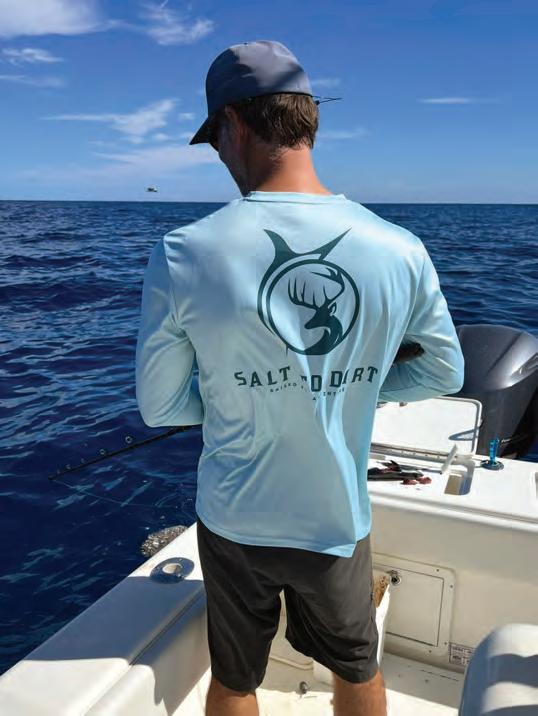

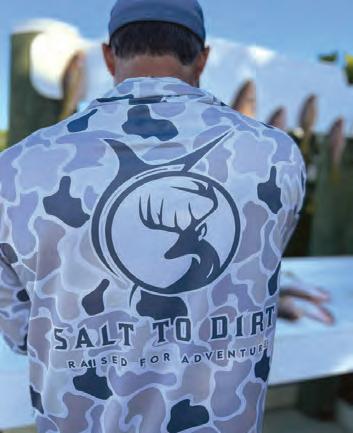



Friday - Sunday
October 10-12
10AM-5PM Daily



Parking at Rose Marina with Complimentary Shuttle to the Show 951 Bald Eagle Dr, Marco Island FL 34145
Marco Island Yacht Club & Marco Island Marina Association
Tickets $15 in Advance $20 at the Gate


By: Beth Steele
Every summer in the Florida Keys, excitement builds for one of the most anticipated traditions on the water, lobster season! Lobstering in Islamorada has become more than just a pastime, it’s a ritual. For me personally, it is marked on my calendar like a holiday and it is a way to enjoy the ocean while respecting the laws that protect it.
Mini season is a two-day sprint. It gives divers and bully netters an early start at Florida Spiny Lobsters before the commercial season starts. By following the Florida Fish & Wildlife Conservation Commission (FWC) regulations, such as measuring each lobster with the gauge to make sure it’s the legal size and sticking to the daily “bug” limit of six per person per license, you help to ensure a safe and sustainable harvest while setting a good example for sportsmanship. I limited out each day with the crew, which was so exciting because I’m a big fan of lobster ceviche!
Once regular lobster season opened a week later, the adventure continued. It runs from August through March. This means after a day of swordfishing, I can hit a favorite spot to grab a few lobsters for dinner. Some days, it’s about the quick win. Other days, you are working harder, searching deeper, but that makes it even sweeter when you finally find them. Lobstering is more than dinner. It’s also about the connection to the water and the enjoying time with friends with some laughter on the boat.
Things to remember, get our early because sunrise dives are calmer, gear up right with a good tickle stick, gloves, net, dive flag, and know the laws with size requirements. Measure every lobster, and check twice and have a feast!
Here Fishy Fishy!
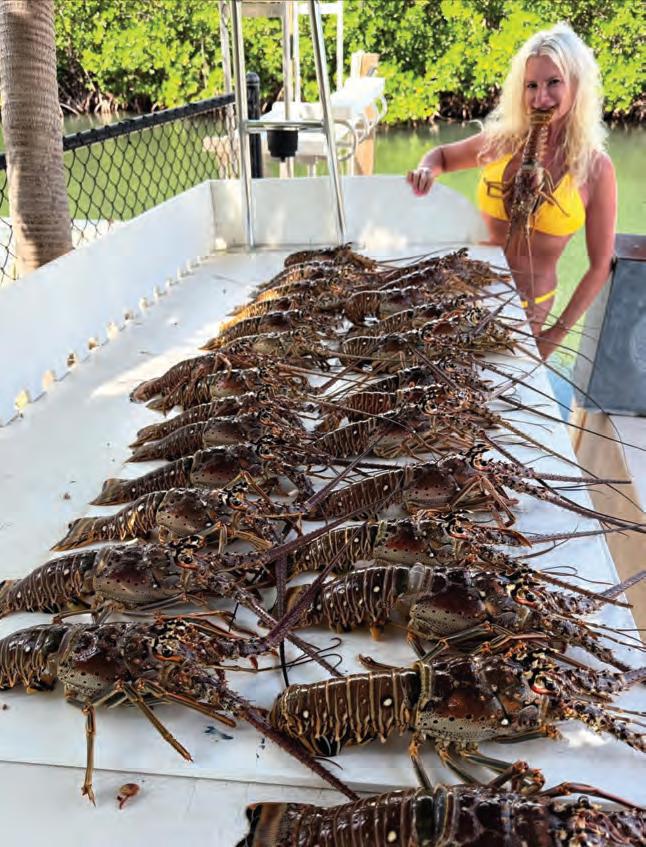
By: Capt. Rob Modys
Well, sort of. The October days do get shorter, but winter has a very tough time pushing the hot weather out of the Florida Keys.
Most local residents look forward to the lower temperatures and most certainly the lower humidity readings. We are also grateful to be on the downward slide of hurricane season and very much look forward to the first “real” cold front, where we can open the windows and let some fresh air into our homes.
Personally, for me, October is all about the better bite in the backcountry. As the days get shorter the fish seem to positively react to the change. They begin to feed more and for longer stretches in the morning and evening hours. Snook, redfish, seatrout and other inshore species are also on the move from the deep-water cuts to the open flats where they are much easier to target while sight fishing.
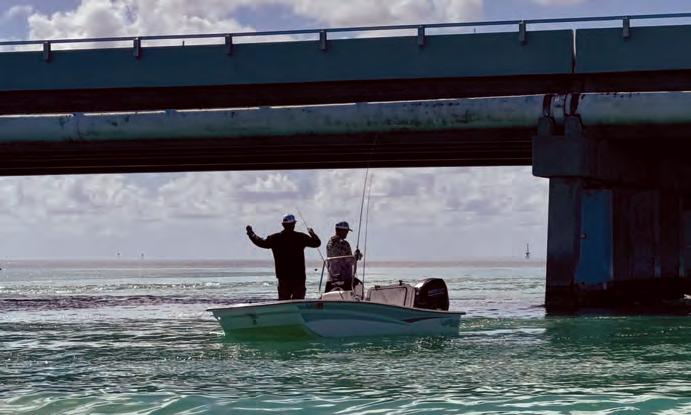
the locals begin to get the open water, flats and sandbars back.
There’s also a reverse push of tarpon headed south from their northern summer haunts as the days grow shorter and the waters cool. I’ve found this migration to be overlooked by many anglers. Fishing where the Gulf and Florida Bay waters meet should present a good chance of hooking up with a silver king for most of the latter half of October.
While bonefish and permit are very active during the summer months, they seem to bite even better in the Fall. I’ve never quite figured out why, but I’ve noticed that the overall wariness of both seems to wane a bit. Perhaps it’s the need to feed before the winter arrives? I’m not sure, but I’ll take the gift of any advantage I can get when stalking both bones and permit.
October is also the beginning of a couple of months of quiet time here in the Keys. The overall craziness of the multiple summer holidays are over and
I find myself on my boat more often than not, with the goal of catching a fish or two, but also exploring new areas. I have to admit it has more to do with being able to stay out longer as the hot and humid weather begins to change. I personally tend to make longer runs and spend more time working areas that I have seen, but ignored during summer mornings.
And of course, October is the beginning of the Keys festival season. Our warm mild winters are the perfect time for outdoor events, and every island in the one-hundred plus mile chain has something to offer. Fantasy Fest in Key West, Taste the Keys and REEF Fest in Key Largo, along with Zombie Bike Rides in both Key West and Islamorada.
This is just the opening volley for dozens of fall and winter events, including art, food and film festivals, offshore championship powerboat racing and one of my favorites in Marathon, the Florida Keys Celtic Festival. So, mark your calendars for some outside fun. Winter is coming.


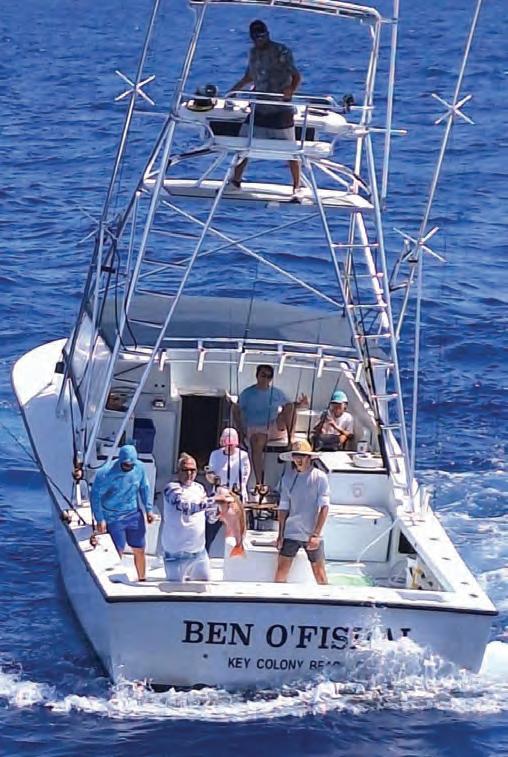
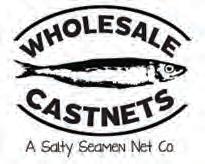

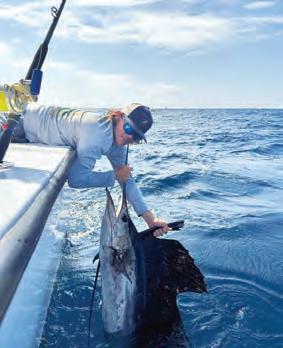
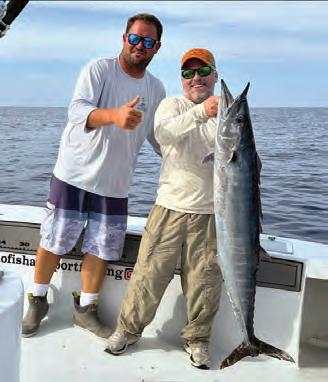


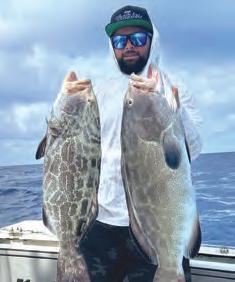


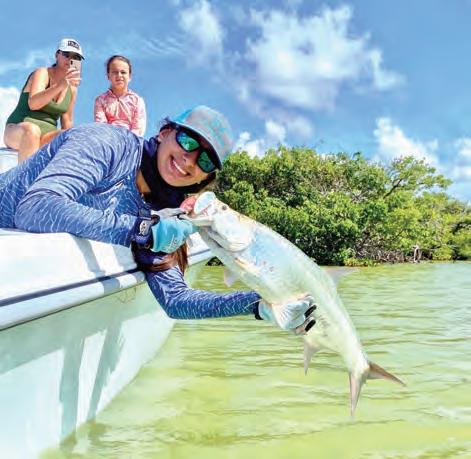



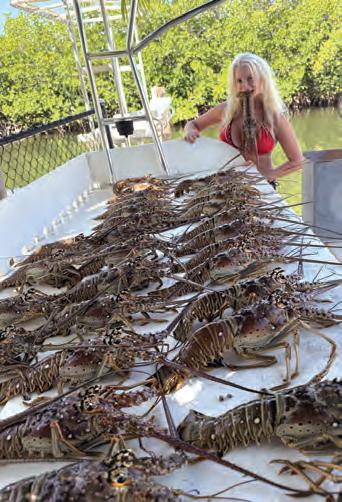


If you have a catch to brag about send your picture and caption to: flkeys@coastalanglermagazine.com




Coastal Angler recently had the opportunity to speak with Evan alas, CEO of alas Apps, to discuss Marispeak (short for Maritime Speak) to see what all the chatter and excitement was about regarding the new Marispeak navigational app. Four years into the making, this new app instantly turns your phone into a maritime communication and information center, allowing clear and secure messaging, maps, water depths, weather information and more. It also enables a push to talk “Walkie Talkie” feature, and audio/video calls for quick communication with anyone using the Marispeak App, once they have been added to your private group, or with any user in the help group.
Some key features of the Marispeak App.
• Nautical Maps Overlay - Displays shipping channels, buoys and channel markers
• Realtime AIS Data - Displays vessels on a map in realtime.
• Plotter - Displays your boat’s current position in real time, allowing recording and retrieval.
• Water Depths
• Speed Indicator
• AI-Arti cial Intelligence Module - Allows you to verbally ask boating, shing and marine life related questions, and receive spoken answers from MariSpeak AI.
• Help Feature - Communicate with other Marispeak users and request assistance
• Real Time Tracker Device - Tracks your boat if it has been stolen.

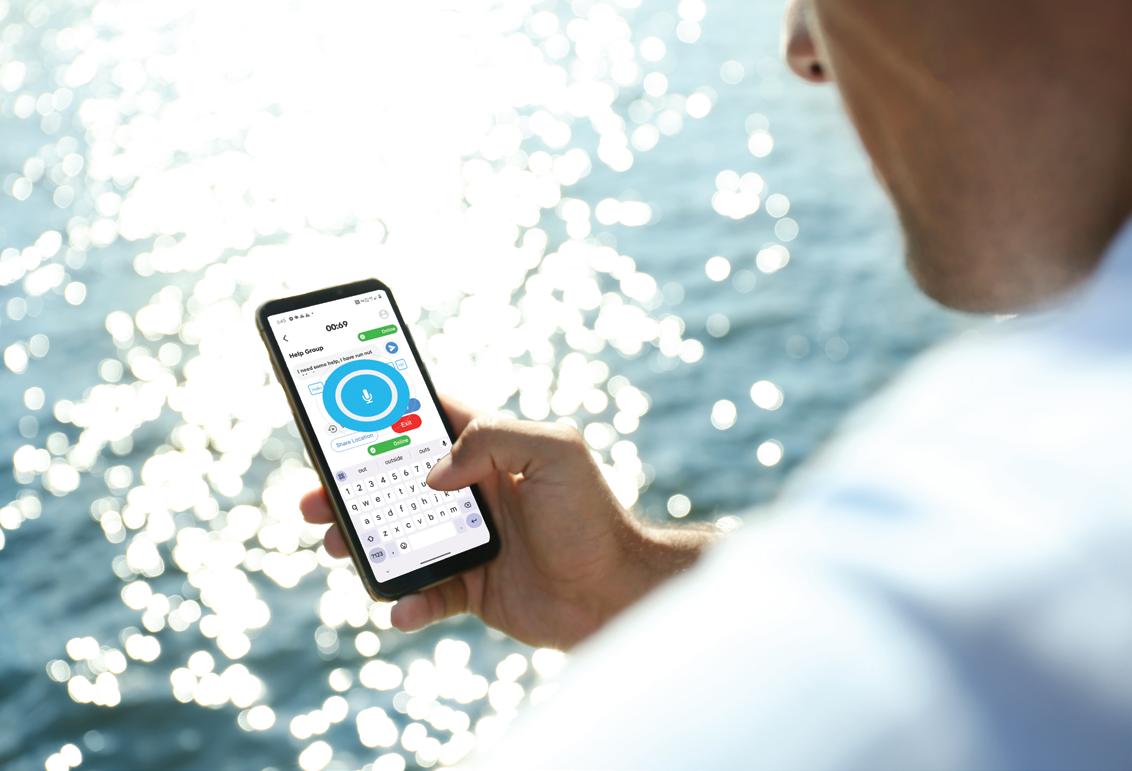
According to Evan, his previous positions as National Business Development Manager for Uniden Australia, and Account Manager for ICOM Australia, enabled him to understand the need for an economical and easy to use navigational and communication device for the marine industry. Evan received assistance for the UI (User Interface) design from Nikolaus Hema, a Graduate of Distinction from Swinburne University in Australia with a master’s degree in design digital research, specialising in research in arti cial intelligence. Evan set out to revolutionize the boating/navigational industry, by utilizing high tech functionality with low tech use applications. is was no easy task. Developing this app for a global audience required years of painstaking e ort from the team.
Now fully tested and available through the APP Stores, this app is a “must have” for all boaters of any size vessel including kayaks and canoes.
Coastal Angler Magazine salutes Marispeak for their monumental accomplishment which we believe is destined to change the boating industry.




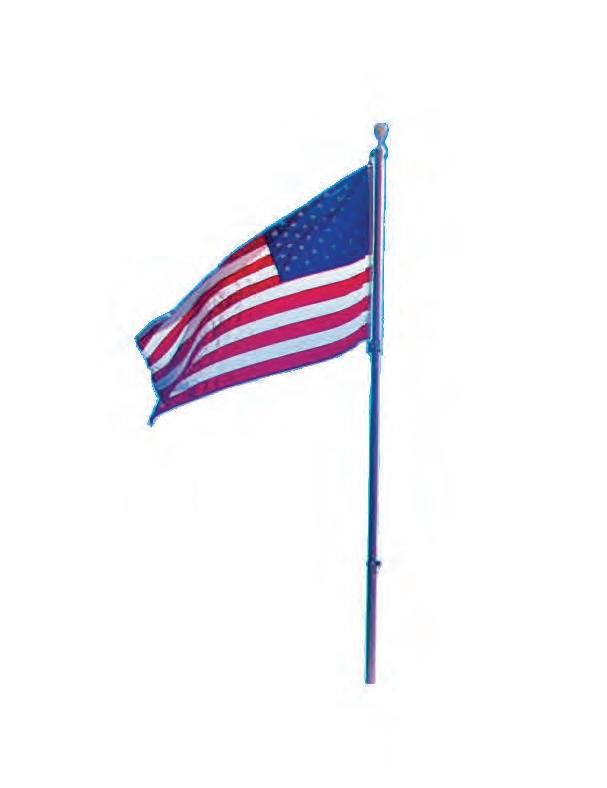
ShoreStation hydraulic boat lifts are a reliable choice for coastal residents and boating enthusiasts alike. Their strong construction, made with corrosion-resistant materials, allows them to withstand harsh environmental conditions, including sun, storms, and saltwater damage. ShoreStation provides a steadfast solution for protecting waterfront investments, o ering peace of mind to owners in the Sunshine State.
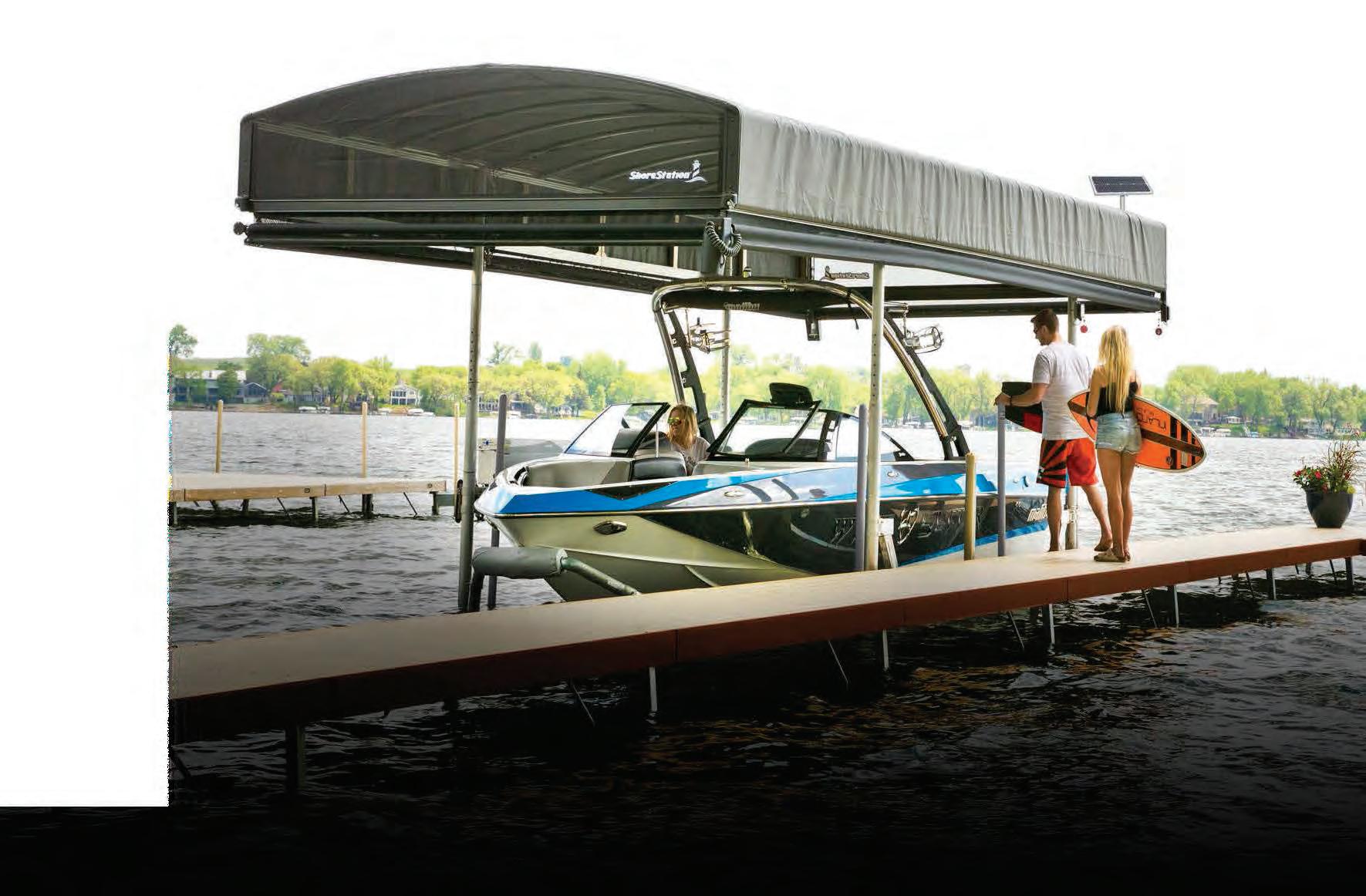




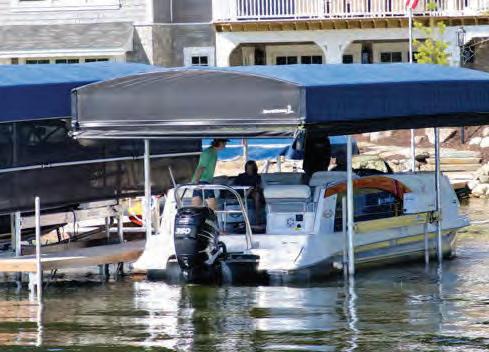

Equipped with exceptional weather resistant fabric and breathable SunTex 80 woven mesh ends for maximum protection and durability,

Made from the highest quality materials, our innovative hydraulic boat lift is one of the fastest and safest lifts on the market today. When you have a hydraulic lift, there’s no need to worry about wind and waves getting in your way. This lift will give you con dence to safely land and secure your boat in less-than-ideal conditions.
Never miss another moment on the water. Power your lift with clean, free solar power. Our speedy 20 watt charger features solar regulator drainage protection, saving your battery from permanent damage caused by overcharging.




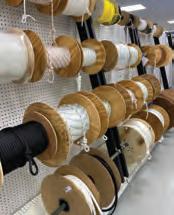

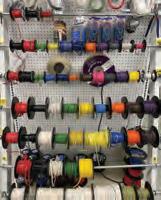




















October has traditionally been one of my favorite months of the year for a number of species, but especially for grouper. I’ve always said that Christmas week is the apex of grouper fishing…and it is. I’ve also said that there is a mental hierarchy in grouper, with gags being at the top and reds being at the bottom. I could catch a red grouper on a wooden dowel rod with menhaden oil on it and a hook attached…and that is not an exaggeration.
I hate to be repetitive, but a live pinfish on a Squid Decoy Jig is a dead ringer for red grouper (and all grouper for that matter). If you have the ability to keep a pinfish trap in the water, I would strongly suggest securing several dozen pinfish to take bottom fishing. Everything out there eats them, not to mention they are very hardy and will live all day in the livewell. Red grouper, gags and scamps all view pinfish the same as sailor’s choice and other small snappers as egg eaters. If for no other reason, they will eat them just to kill them, so they don’t eat their eggs. Frozen cigar minnows and sardines have caught more grouper (historically) than all the other baits combined. That’s what they eat!
Tim Barefoot
ice, fuel or weather.

We always had hundreds of pounds of (frozen) cigs and sardines, so let’s not get too carried away with the bait selection. Frozen cigs get the job done, but now that I’m fishing the super stealth decoy
10 seconds. Nothing down there can resist it. Period.
As I always say, “Find the bait, find the fish.” Yes, I like to fish structure like ledges, wrecks or live bottom, but the main ingredient is food. If you mark big stacks of cigar minnows, sardines, beeliners, etc., it’s always a good idea to fish below that, and keep the light line out on the surface or near the surface for all the pelagics. We have vast areas of sand bottom with no structure whatsoever. We just fished big stacks of bait and caught them GOOD! Red grouper can be caught in most depths of water. From as shallow as 15 feet on the Atlantic side to 400 feet and beyond. The only problem with fishing this style of jig and minnow combination is that you are definitely gonna catch gags, scamps, blacks— and those “endangered” American red snapper.

jig/bait combination, I do love a live pinfish or other live baits.
Please take a descending device and familiarize yourself with how to use it.
I guess that’s why I’m writing this article featuring red grouper this month; because that’s about all we have to fish for this time of year. So get out there with some pinfish and frozen minnows and harvest the red grouper and scamps.
On a commercial fishing trip (many years ago), if you ran out of any one of these four things, it would send you back to the Hill: bait,
With that all being said, don’t ever pass up the opportunity to jig up live cigs and sardines for the ULTIMATE combo! The life expectancy of a live cig or sardine on a Decoy Jig is under
Take your kids fishing, too, and make plenty of videos and photos that’ll last a lifetime.
Learn more from Tim Barefoot on his YouTube channel and at barefootcatsandtackle.com.

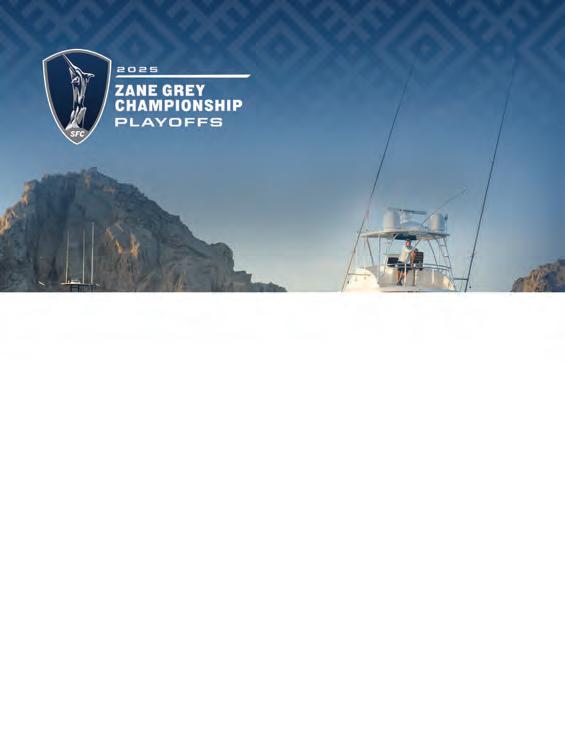



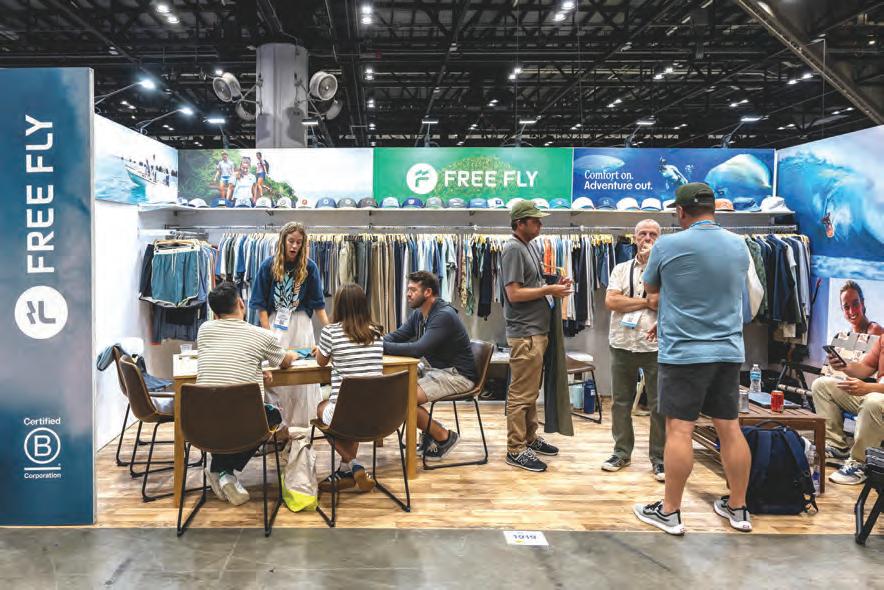
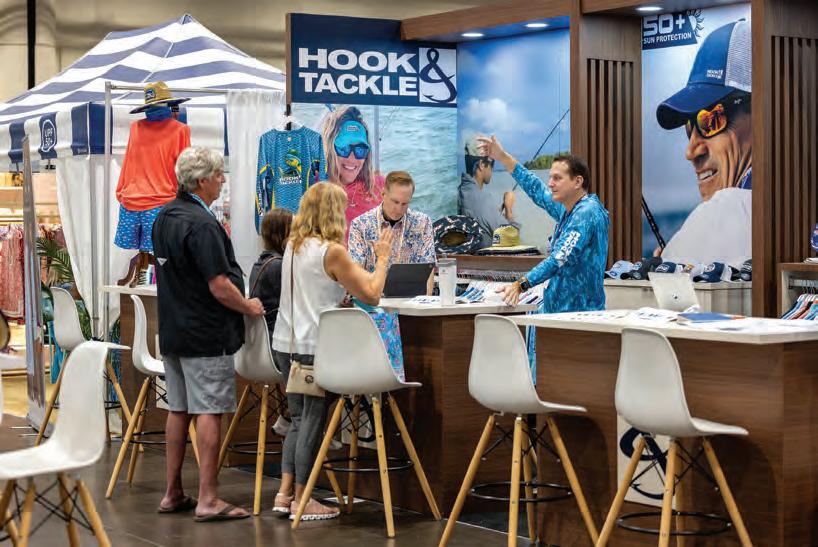
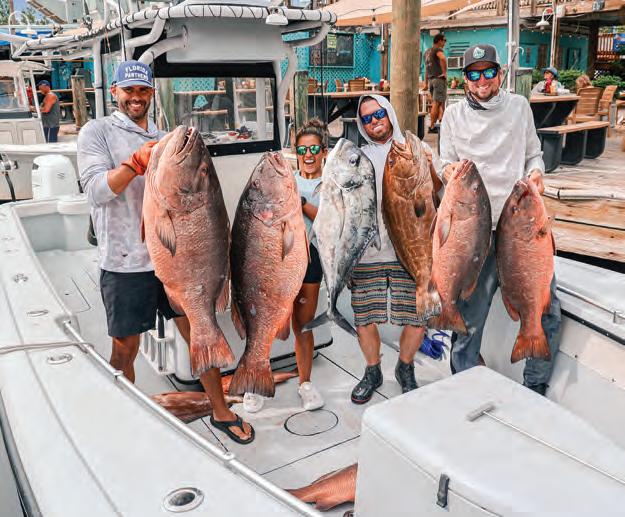
By Astrid deGruchy
When it comes to snapper fishing, the Florida Keys are hard to beat. From shallow mangroves to deep wrecks, these waters hold everything from tasty keepers to tackle-busting giants, and the right gear makes all the difference.
shrimp, pilchards, or cut ballyhoo for consistent action. Downsizing leader in clear water is key. On the reef edge, Yellowtail snapper are Keys gold. Target them from spring through fall using a PENN Slammer IV 4500 with 15 lb mono. Set a steady chum slick and free-line white baits like pilchards on a Mustad 1/0 J-hook. Keep your presentation natural since yellowtails spook easily.
For heavier hitters, Mutton snapper shine during the late spring and early summer full moons. Use a PENN Authority 5500 matched with 30 lb mono leaders and Mustad 3/0 to 4/0 circle hooks (Big Guns are the best). Drift live pinfish or pilchards back naturally, and be ready, when a mutton eats, it’s all power. For something more regal, head deep for queen snapper, the true royalty of the snapper world. These stunning red fish haunt 500-1,000 feet down along the continental shelf. A PENN Fathom II paired with 40 lb braid and a Mustad 6/0 circle hook tipped with squid or bonita chunks gets it done. Most anglers opt for electric reels, but handcranking one up is a badge of honor.

Mangrove snappers are the everyday staple, found year-round around bridges, mangroves, and patch reefs. Light tackle with a PENN Spinfisher VI or Battle III 3500 with 20-25 lb mono gets the job done. Use live


Then there’s the ultimate test: the Cubera snapper. Capt. Kody (@capt_kody) recently put me on a 65-pound Cubera out of Key West. These brutes demand muscle, like PENN International 50VISX, 80-100 lb mono + Mustad 12/0 circle hook type muscle. Summer full moons are prime, and whole lobsters are the bait of choice (yes, not cheap). Once you’re hooked up, it’s a brutal test of endurance, arguably the hardest fight you’ll experience on stand-up gear, especially when you’re handcranking every inch.
Out here, every snapper tells a story… from the quick hits of mangroves to the heartpounding brawls with cubera beasts. We live for those moments, and now you can too. Follow the journey on Bean Sportfishing TV on YouTube. If you are interested in a Cubera Trip, reach out to Capt. Kody Michael on Instagram (@capt_kody) or go to reel-guides.com
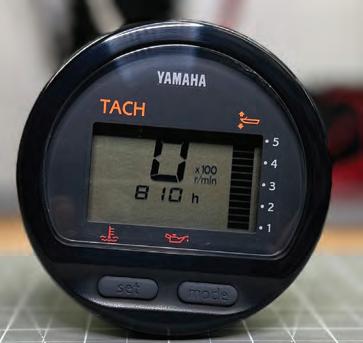





It’s no fish tale when you run with a John Deere. You can get everything done faster and easier, so you get more time on the water. Plus, our special offers make them the catch of the day.



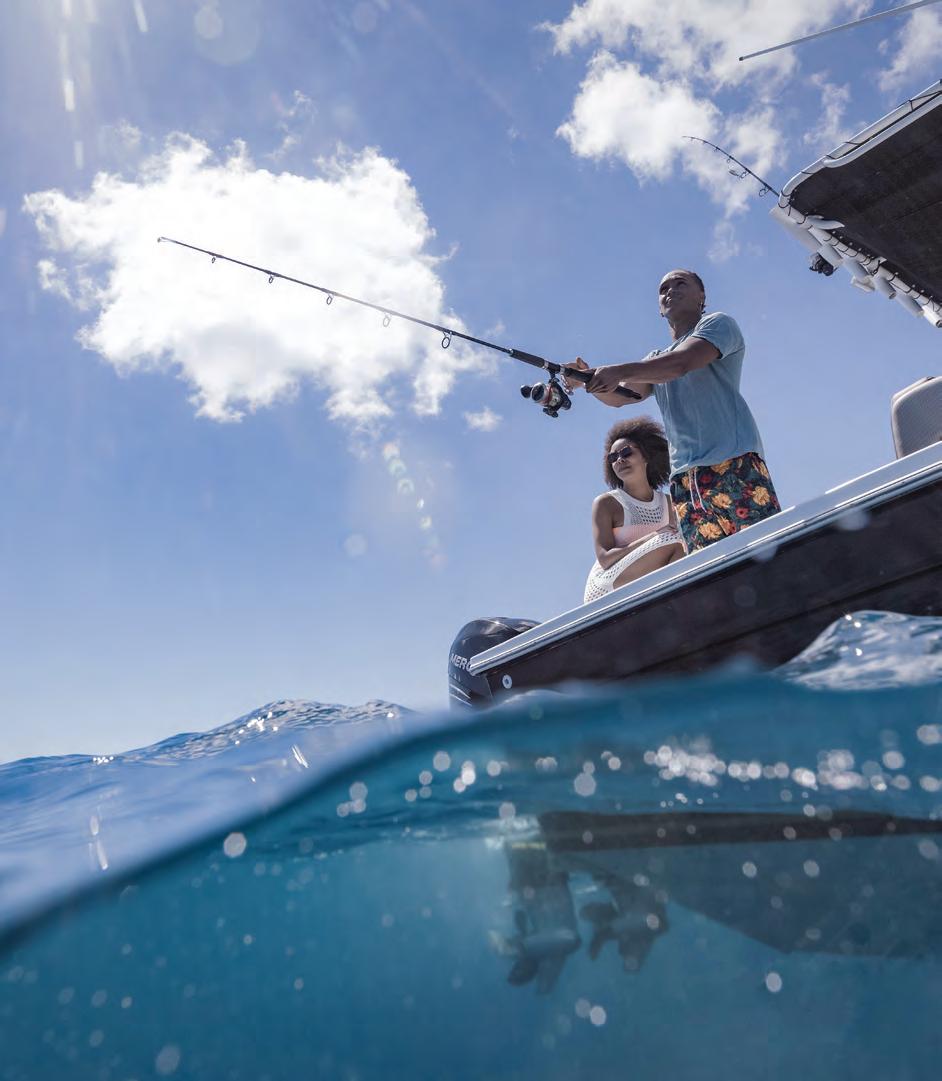
Nestled in the heart of the Caribbean, the US Virgin Islands embody a harmonious blend of natural beauty, cultural vibrancy, and laid-back serenity. These islands are more than just a picturesque getaway; they are a living testament to nature’s rhythm and resilience, effortlessly in tune with the world around them.
With no passport required for U.S. citizens, from the moment you arrive, the islands’ natural rhythm is palpable. The gentle sway of palm trees, the soothing sound of surf crashing against sandy shores, and the vibrant melodies of local music all echo the heartbeat of this tropical paradise. The islands’ lush landscapes, with their verdant hills and crystal-clear waters, mirror the steady pulse of life that sustains the local ecosystems and communities alike.
The US Virgin Islands’ environment is a symphony of biodiversity with world class fishing and diving. These natural elements are not static; they dance in harmony, influenced by the tides, wind, and seasonal changes—further emphasizing the islands’ intrinsic rhythm. This delicate balance underscores the importance of conservation efforts, ensuring that future generations continue to experience the islands’ natural cadence.
Culturally, the US Virgin Islands are equally in tune. The music, dance and festivals reflect a vibrant heritage rooted in African, European and Caribbean traditions. The spirited calypso beats
and reggae rhythms are expressions of life's ongoing dance—celebrating resilience, community and joy. These cultural expressions are an extension of the islands’ natural rhythm, showcasing how human life here moves seamlessly with nature’s flow.

In a world often dictated by chaos and rapid change, the US Virgin Islands serve as a reminder of the beauty of being in sync with nature’s tempo. Their natural, cultural and ecological rhythms offer







a blueprint for sustainable living and harmony. As travelers and residents alike continue to embrace this rhythm, they uphold a legacy of balance—one that celebrates life’s natural flow and the enduring spirit of these remarkable islands. In the US Virgin Islands, being in rhythm
way of life.
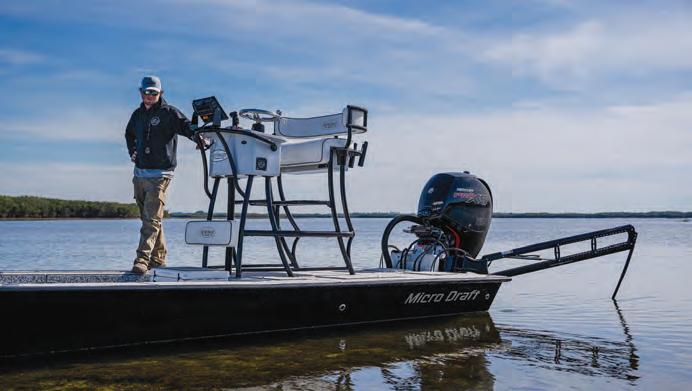




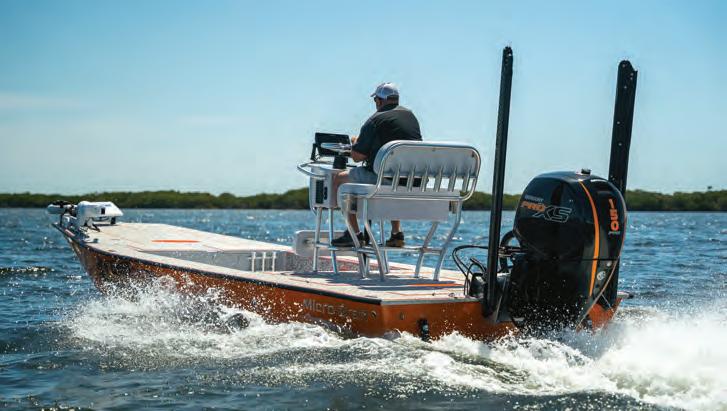

The North Carolina Wildlife Resources Commission (NCWRC) will implement Delayed Harvest Trout Waters regulations on 33 trout waters beginning Oct. 1. Under Delayed Harvest Trout Waters regulations, only catch-and-release of trout is permissible from program waters between Oct. 1 and June 5, 2026. No natural bait may be possessed, and anglers can fish only with artificial lures with one single hook. An artificial lure is defined as a fishing lure that neither contains nor has been treated with any substance that attracts fish by the sense of taste or smell. NCWRC staff stock Delayed Harvest Trout Waters from fall through spring with high densities of trout to increase anglers’ chances of catching trout. Delayed Harvest Trout Waters, posted with diamond-shaped, black-andwhite signs, are popular fishing destinations for anglers who enjoy catchand-release trout fishing. Anglers should be aware that stocking locations along streams may be different than in the past due to hurricane damage impacting the stocking truck and angler access.
For more information on trout fishing and stocking, visit ncwildlife.gov/trout and to follow the progress of the Setzer renovation, visit ncwildlife.gov/setzer.
